Collaborators - Global Flyway Network
We are indebted to a range of magnificent collaborators. Here we list our national and international colleagues with whom we work.
Adrian Riegen
Global Flyway Network associate | New Zealand. Adrian Riegen has done research on waders for many years, and has trapped, marked and observed waders in many international wader monitoring programmes, including in North Korea. He liaises with observers and researchers along the East Asian-Australasian Flyways, to track the movements of individually marked shorebirds.
[caption id="" align="aligncenter" width="336"]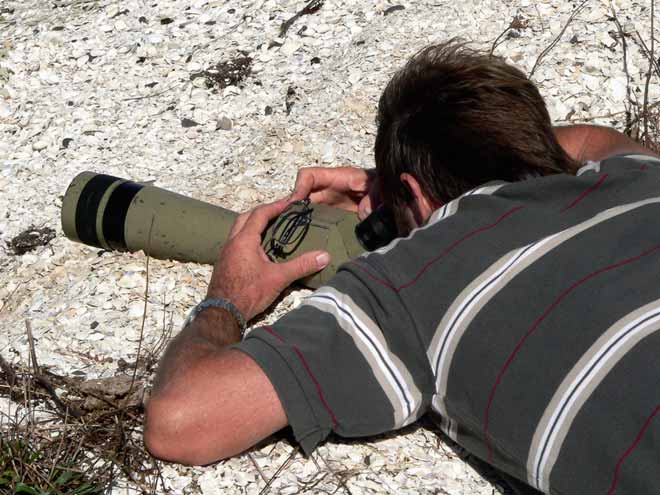 Adrian spotting waders. Scopes or high-powered binoculars are useful for watching waders or shorebirds, especially if you want to recognise species at a distance, or record coloured leg bands on migratory birds.[/caption]
Adrian spotting waders. Scopes or high-powered binoculars are useful for watching waders or shorebirds, especially if you want to recognise species at a distance, or record coloured leg bands on migratory birds.[/caption]
Afonso Rocha
I am a postdoctoral researcher based at the Functional Biodiversity Group, University of Aveiro (Portugal). As conservation ecologist passionate for shorebirds and their habitats, I focus on the migratory connectivity along the East Atlantic Flyway and global processes of climate change. I have a particular interest in migratory strategies, physiological constraints and adipose tissue signatures of migratory birds.
Since 2005 I carry out the monitoring and study of shorebird species and the management of coastal habitats in Tagus estuary (Portugal). I evaluated the advantages and disadvantages of coastal saltpans as breeding and foraging habitats for shorebirds, specifically detailing actions that can be implemented to enhance the value of this human created habitat for the conservation of shorebird populations.
[caption id="attachment_4571" align="alignnone" width="4608"]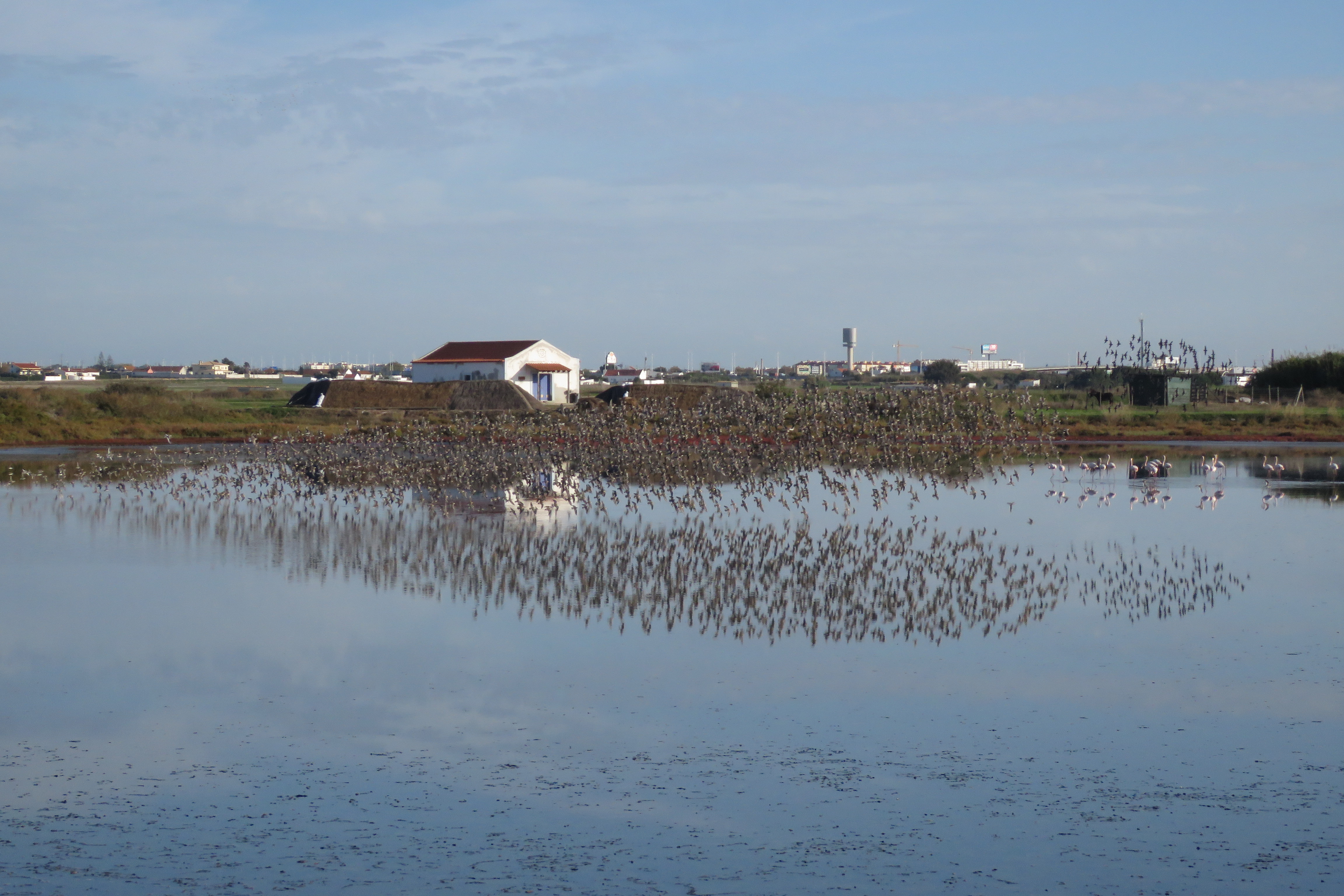 Shorebirds in Samouco saltpans (Portugal). Photo: Afonso Rocha[/caption]
The work with shorebirds in Portugal has driven me to Theunis and we have been collaborating in the tagging project of the Black-tailed Godwits in the Portuguese rice fields and more recently under the project Waders of the Bijagos with Bar-tailed Godwits in Bijagos archipelago (Guinea-Bissau).
You can find more information on my website or breaking news on the twitter @afonso_dr_rocha.
Profile photo (by Camilo Carneiro): Afonso with a Curlew sandpiper wintering in Bijagos archipelago.
Shorebirds in Samouco saltpans (Portugal). Photo: Afonso Rocha[/caption]
The work with shorebirds in Portugal has driven me to Theunis and we have been collaborating in the tagging project of the Black-tailed Godwits in the Portuguese rice fields and more recently under the project Waders of the Bijagos with Bar-tailed Godwits in Bijagos archipelago (Guinea-Bissau).
You can find more information on my website or breaking news on the twitter @afonso_dr_rocha.
Profile photo (by Camilo Carneiro): Afonso with a Curlew sandpiper wintering in Bijagos archipelago.
Allert Bijleveld
I am a tenure-track scientist at Royal NIOZ Netherlands Institute for Sea Research in the department of Coastal Systems, but this year I work in the Department of Zoology at the University of Oxford where I collaborate with Dora Biro and the Oxford Navigation group (OxNav). In 2015, I obtained my PhD degree with Theunis Piersma on the topic of social foraging in Red Knots. As a behavioural ecologist, I am interested in how phenotypes interact with the environment to shape behaviour, movement, spatial distributions and ultimately fitness. My research particularly focusses on consistent individual differences (animal personalities) and collective behaviour. Examples of my research question are: What maintains individual variation in physiology, behaviour and life-history traits? How does this variation affect fitness in a changing world? How does information transfer between individuals and how does this affect fitness? In my studies, I combine controlled experiments, modelling techniques, field observations, and the latest tracking technologies. You can find more information on my NIOZ website, and my publications on ResearchGate or Google Scholar.
Anne Beaulieu
Professor Anne Beaulieu holds the Aletta Jacobs Chair of Knowledge Infrastructures for Sustainability at Campus Fryslân and is Director of the Data Research Centre, University of Groningen. At present, Beaulieu’s main topics of research are infrastructures for assessing progress on the SDGs and for ecological monitoring. Knowledge infrastructures are essential to how we define and establish urgency around issues like climate change or loss of biodiversity, and they are also key to monitoring our progress in addressing these issues. In this work, pursued with Selen Eren at Campus Fryslan and in collaboration with the team of Theunis Piersma of the University of Groningen, Beaulieu examines how different actors use the interfaces to such infrastructures to know and intervene responsibly. At the heart of this research are questions about how values and practices are reinforced by current knowledge infrastructures, which adaptations are needed to develop more responsible and sustainable practices based on knowledge and how to make complex, multi-dimensional data tractable. The aim is better knowledge infrastructures, better in the sense that they bring issues of intention, responsibility and accountability to the forefront and that they garner sufficient trust and reliability to enable us to act. In related projects with Clarisse Kraamwinkel and Ruth Howison, we are developing expertise on Responsible Knowledge Infrastructures for Climate Adaptation, focusing on climate resilience of soils in Friesland. Together with Taylor Craft and Ruth Howison, we are exploring how to assess agricultural sustainability by integrating remote sensing and animal ecology with agricultural practices. Beaulieu recently developed the minor programme Data Wise: Data Science in Society with Gert Stulp. Beaulieu’s research focuses on diversity and complexity in knowledge infrastructures, with particular attention to digital data assemblages and interfaces for the creation and circulation of knowledge. She is co-author of three books on knowledge and technology (see Books page) and has published widely the significance of ethnographic methods for the study of data practices.
Auxiliadora Villegas Sanchez
Assistant professor in ecology, zoology and physiology at the Universidad de Extremadura, Badajoz, Spain.
Bart Kempenaers
Behavioural ecologist with a broad interest in all aspects of behaviour, but with a focus on mating behaviour and sexual selection. Ornithologist with a passion for shorebirds and the Arctic. Director of the Department Behavioural Ecology and Evolutionary Genetics at the Max Planck Institute for Ornithology in Seewiesen and Professor in Behavioural Ecology at the Ludwig Maximilian University in Munich. His main research interests are about how sexual selection affects daily rhythms and sleep, and in understanding the link between mating behaviour, site fidelity and movement ecology.
Bob Hickey
Professor at Department of Geography, Central Washington University, USA. AnnRoeBIM resident GIS expert. Global Flyway Network|Australia.
On a lark (gotta get at least one bird references in here), I accepted a position at Curtin University in Western Australia a few decades ago. While I was there less than 4 years, I got involved in the benthic invertebrate and bird mapping projects of Grant Pearson, Theunis Piersma and the Royal NIOZ Netherlands Institute for Sea Research, at Roebuck Bay and Eighty Mile Beach (NW Australia) as the resident GIS/GPS/remote sensing expert.
Over the years, I've been involved in five of the major AnnRoeBIM expeditions and continue to make maps and run spatial analysis for team members. AnnRoeBIM reports, of the Roebuck Bay and Eighty Mile Beach expeditions starting in 1999, can be accessed through my personal page here.
At present, I'm a professor of Geography at Central Washington University. I spend most of my time teaching undergraduates, but every now and then I get involved in a GIS project of some sort - mostly involving environmental/ecological modeling.
More on my work can be found at http://www.onlinegeographer.com.
[caption id="attachment_2296" align="alignnone" width="491"]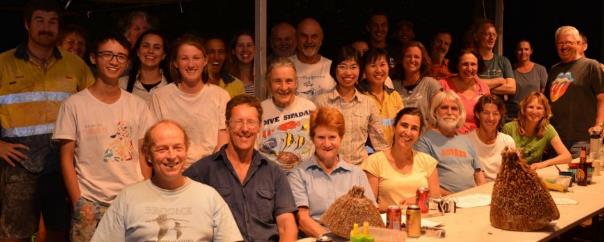 AnnRoeBIM expedition 2016 - the Eighty Mile Beach team[/caption]
[caption id="attachment_2295" align="alignnone" width="491"]
AnnRoeBIM expedition 2016 - the Eighty Mile Beach team[/caption]
[caption id="attachment_2295" align="alignnone" width="491"] AnnRoeBIM expedition 2016 - the Roebuck Bay team[/caption]
Profile photo: Bob Hickey, with Beardo
AnnRoeBIM expedition 2016 - the Roebuck Bay team[/caption]
Profile photo: Bob Hickey, with Beardo
Christiaan Both
Associate professor at the University of Groningen, The Netherlands.
Clemens Küpper
Max Planck Institute for Ornithology. Research Group Behavioural Genetics and Evolutionary Ecology. Information about Clemens' research group can be found at http://www.orn.mpg.de/3731861/Research_Group_Kuepper
Dan Ruthrauff
I am a Research Wildlife Biologist with the US Geological Survey’s Alaska Science Center, and have been actively studying Alaskan shorebirds since 1996. I have pursued studies of foraging ecology and reproductive biology, helped document the status and distribution of shorebirds in Alaska and beyond, and been involved in studies to determine the migratory connectivity, migration ecology, and conservation ecology of long-distance migratory shorebirds.
I conducted my Master’s thesis on the reproductive ecology of Western Sandpipers on the Yukon Delta National Wildlife Refuge, working with Brian McCaffery and studying under Dr. Mark Colwell at Humboldt State University. Upon graduation in 2002, I began working for Bob Gill and Lee Tibbitts at the US Geological Survey. It was through Bob that I became acquainted with Team Piersma personnel. In 2004, I shared time at a camp on Egegik Bay on the Alaska Peninsula with Anne Dekinga. Anne was along to assess the viability of the site for capturing Bar-tailed Godwits; suitably impressed by the region’s shorebirds, Anne returned in 2005 with Theunis and Petra, girded for battle to capture godwits. Despite failing miserably to capture even a single fall-staging godwit (and gloriously failing in this pursuit ever since), a friendship was created.
This friendship evolved in 2007 when Bob innocently asked if I’d ever considered pursuing a PhD. Bob and Theunis had long traded ideas about the unusual winter ecology of Rock Sandpipers in upper Cook Inlet, Alaska. They’d excitedly discussed Bob pursuing a PhD on the subject…but as Bob’s interests were drawn to the ecology of long-distance migration, he generously ceded the idea to me. In 2009, I invited myself along on an expedition to equip Black-tailed Godwits breeding in Friesland with satellite transmitters. On this visit I met current and former graduate students, and visited NIOZ. Later that fall, I arrived on Texel, with 30 Rock Sandpipers in tow, to begin a PhD on the behavioral, environmental, and physiological aspects of this unusual winter ecology. I defended my PhD in 2014 (my thesis is available here). My current research focuses primarily on the response of shorebirds to climate change, specifically focusing on the timing of reproductive events and their overlap with food resources (more information here). I still dabble in attempting to catch Bar-tailed Godwits during fall.
Feature photo: Bob Gill
[caption id="attachment_1949" align="alignnone" width="507"]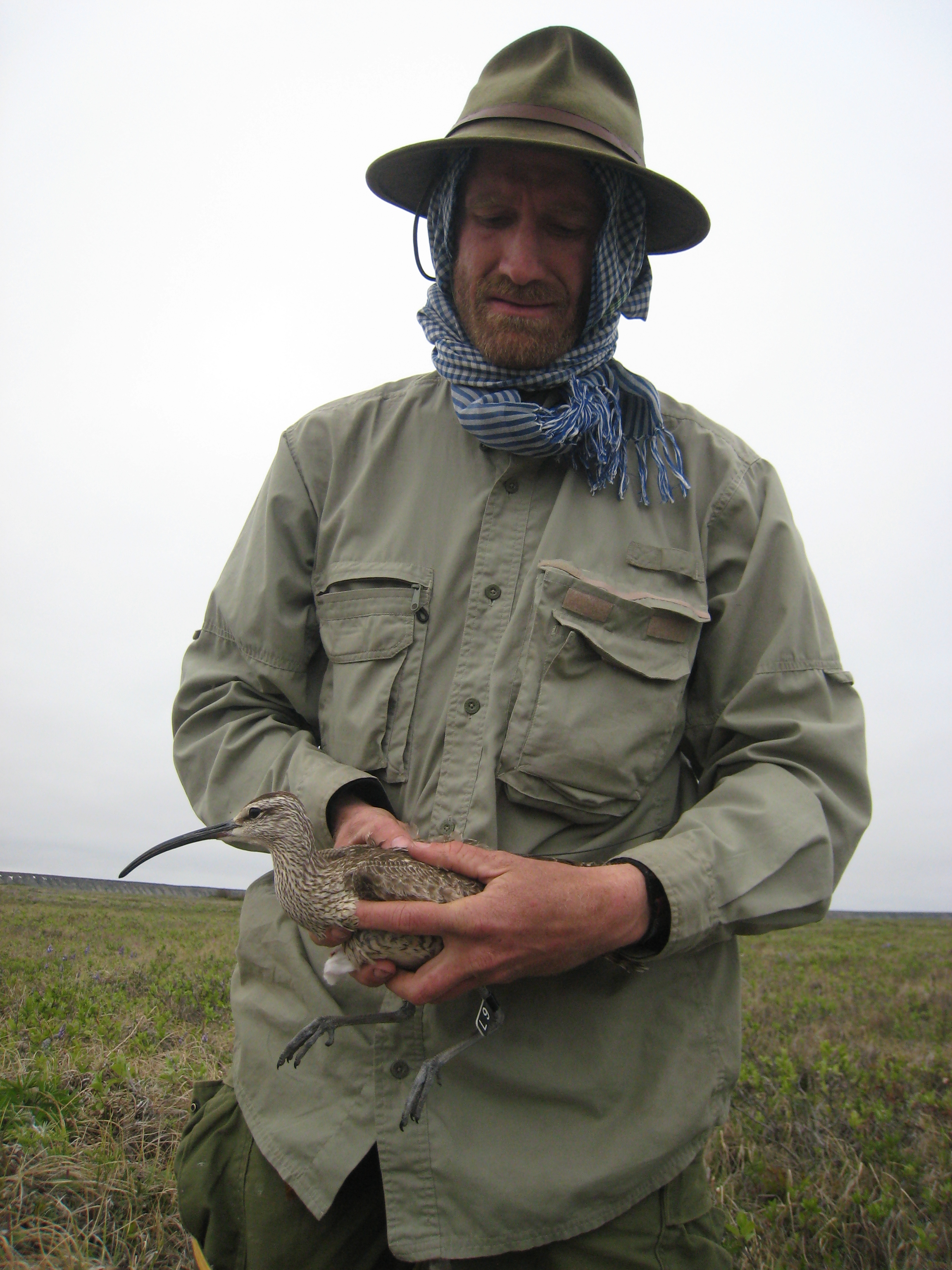 Dan Ruthrauff, holding a Whimbrel. Photo: Bob Gill[/caption]
[caption id="attachment_1964" align="alignnone" width="505"]
Dan Ruthrauff, holding a Whimbrel. Photo: Bob Gill[/caption]
[caption id="attachment_1964" align="alignnone" width="505"]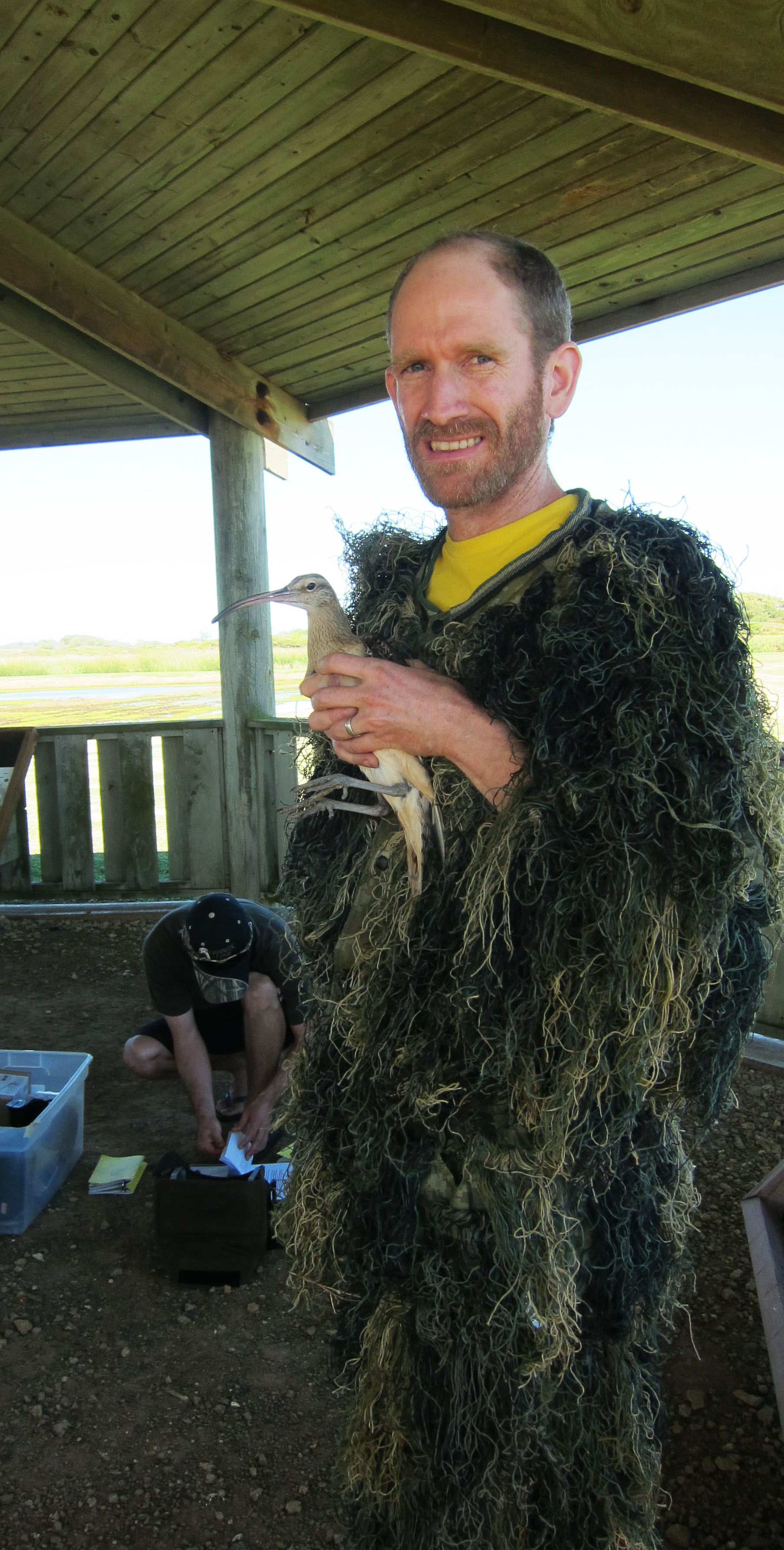 Dan Ruthrauff, now holding a a Bristle-thighed Curlew. Photo: Lee Tibbitts[/caption]
Dan Ruthrauff, now holding a a Bristle-thighed Curlew. Photo: Lee Tibbitts[/caption]
David Lelieveld
David Lelieveld is a theatre producer in the north of the Netherlands. In 2017, for theatre festival Oerol, he produced the play TRACKS with Theunis, Jos Thie (director) and Sytze Pruiksma, about migratory birds. In 2012 he established his theatre company Pier21, with which he created performances such as De Emigrant and Feteranen (Veterans). In 2017 he co-produced the big site-specific play Koning van het Grasland (King of the Meadows), a performance about a farmer and his wife who have to deal with the impact of agricultural changes to the landscape. [gallery ids="2427,2428,2429,2430" type="square" columns="2"]
Impression of King of the Meadows. Photos: Daphne van der Velde
In combination with Koning van het Grasland Pier21 organized Ontwakend Landschap (Awakening Landscape): a 12h experience that starts right after the play. A select audience is brought by a local guide to an encampment in the middle of a nature reserve. Here they stay the night, and see the landscape awake in the early morning. Accompanied by a poem or the sounds of the landscape, they start the day there with breakfast consisting of local ingredients. (Here you can watch a trailer of Awakening Landscape). [gallery ids="2436,2437,2438" type="rectangular"]Impression of Awakening Landscape. Photos: Jeroen Bootsma
In 2018, Pier21 will create an educational performance for children, also about migratory birds, called Kanoet, again in collaboration with Theunis.David Melville
Global Flyway Network associate|New Zealand & China. I have been studying waders and undertaking wetland conservation management in the East Asian-Australasian Flyway since 1974. This has included work in Australia, Thailand, India, Republic of Korea, Democratic People’s Republic of Korea, and Alaska, but mostly Hong Kong (where I worked for WWF Hong Kong establishing the Mai Po Marshes nature reserve), China (with current projects in Liaoning, Shaanxi, Jiangsu and Shanghai) and New Zealand (where I am currently based). Profile photo: Richard Young
Eva Kok
I am a PhD student at the University of Groningen and Royal Netherlands Institute for Sea Research (NIOZ). I am based at the Coastal Systems group at NIOZ where I work under the supervision of Theunis Piersma. In my project I focus on the role of development in shaping of individuals in Red Knots Calidris canutus.
During my Biology studies at the UvA (Amsterdam) I got involved with the shorebird work when I joined an expedition to Mauritania during one of my master projects in 2012. Since then I’ve been enchanted by migratory birds and the extreme performances they display while migrating long distances and inhabit inhospitable areas.
In 2014 I started my PhD research at NIOZ. Building on a great amount of knowledge gained by my predecessors studying Red Knots, I’m working on the ontogeny of different physiological and behavioural traits including the development of migratory routes.
The first part of my project evolves around non-invasive experimental work with birds in captivity at the unique shorebird facility at NIOZ. Together with Kimberley Mathot (PI at the University of Alberta; the Mathot lab, and collaborator of TeamPiersma) we developed a series of experiments contrasting birds of different age cohorts and subspecies to test the prediction that traits get fixed with age.
[caption id="attachment_2045" align="alignnone" width="599"]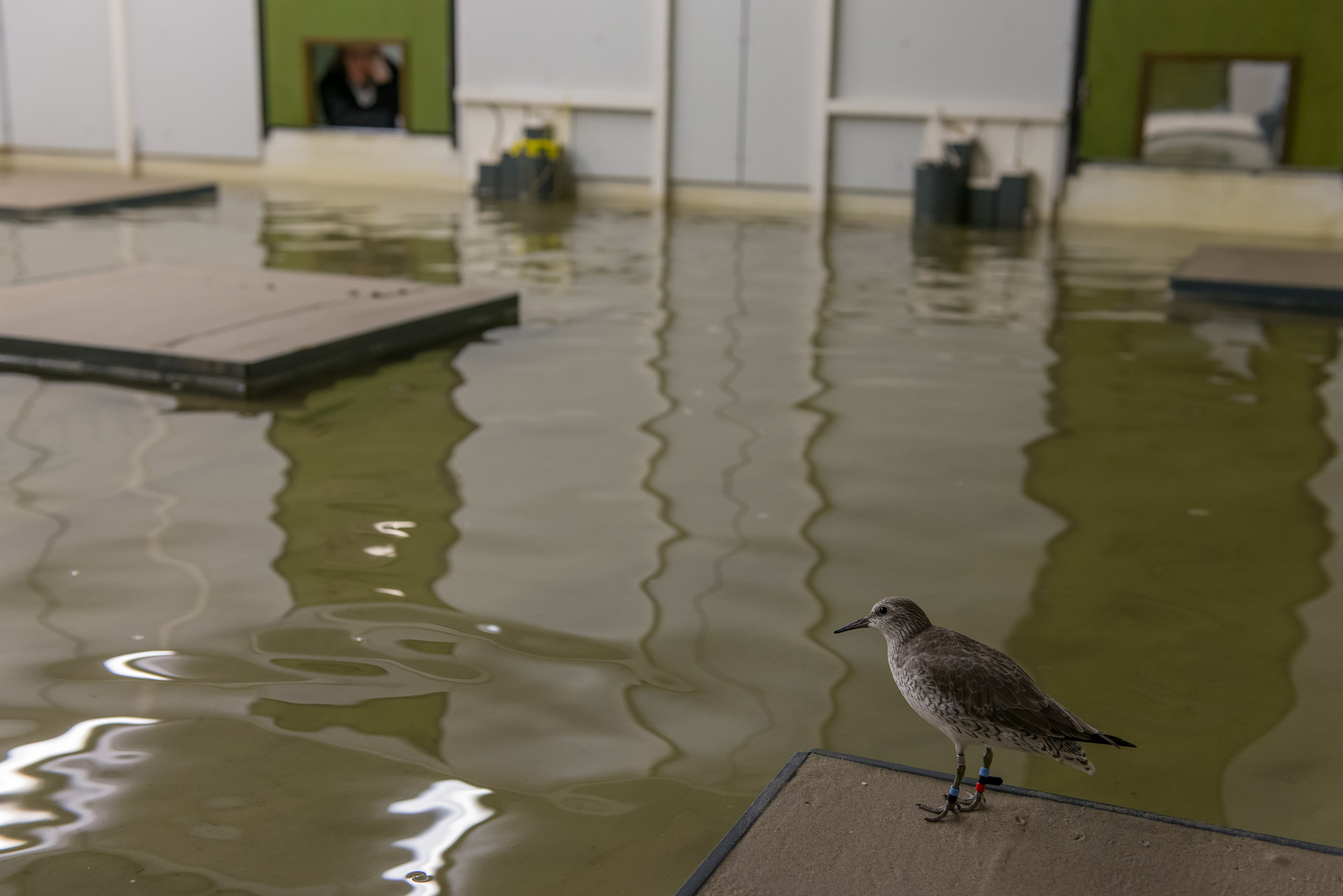 A Red Knot in the experimental intertidal unit of the Shorebird Facility at NIOZ. Photo: Jan Wijmenga[/caption]
Simultaneously, to investigate when Red Knots establish their migration routine, we’re imprinting individuals on the incorrect wintering grounds. Eventually we’ll release them with state-of-the-art satellite tags to follow them on their subsequent migration.
[caption id="attachment_2046" align="alignnone" width="568"]
A Red Knot in the experimental intertidal unit of the Shorebird Facility at NIOZ. Photo: Jan Wijmenga[/caption]
Simultaneously, to investigate when Red Knots establish their migration routine, we’re imprinting individuals on the incorrect wintering grounds. Eventually we’ll release them with state-of-the-art satellite tags to follow them on their subsequent migration.
[caption id="attachment_2046" align="alignnone" width="568"]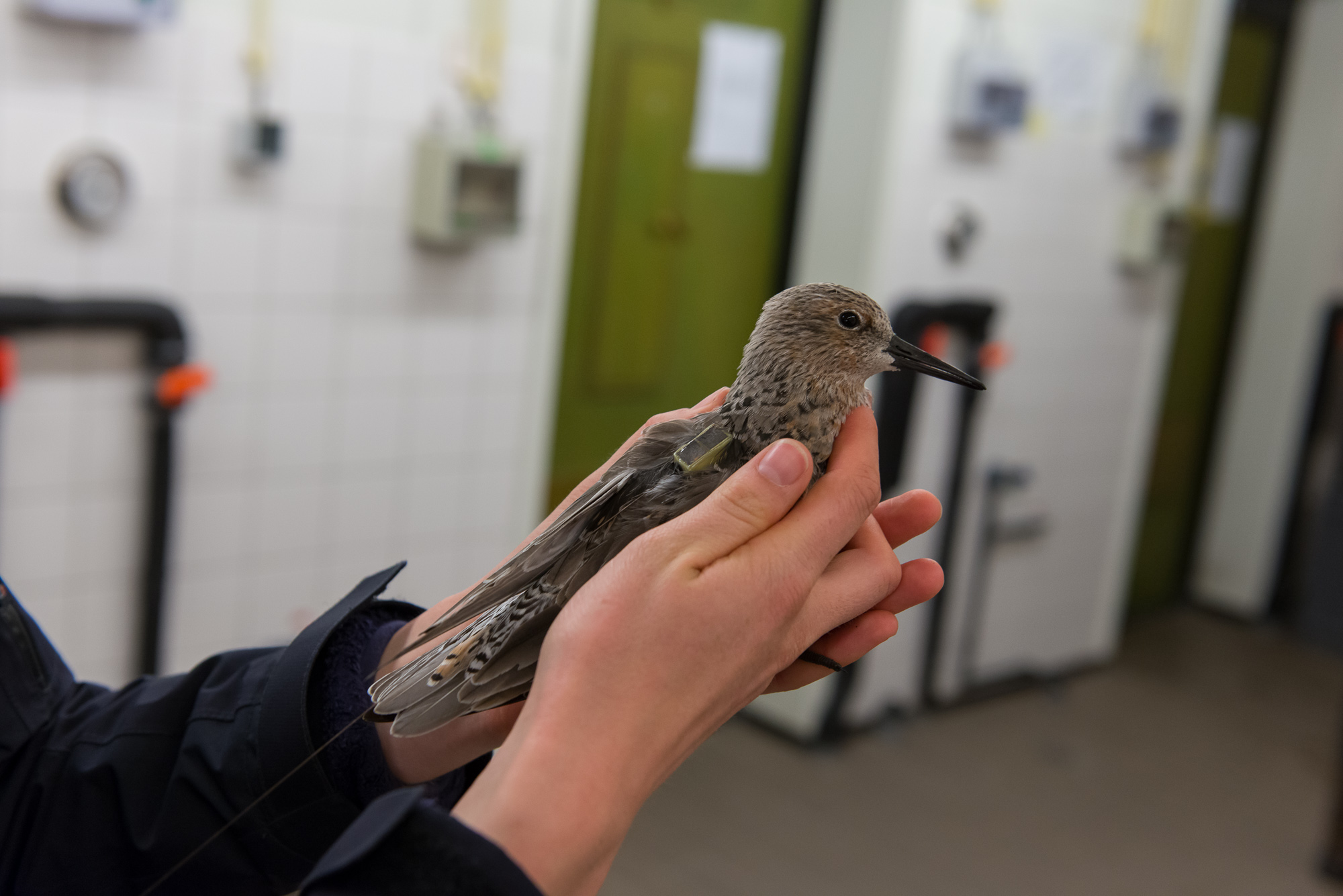 Red Knot "Paula" with a 2-gram satellite transmitter. Photo: Jan Wijmenga[/caption]
Last year we did a methodological pilot experiment testing the new satellite tags that were developed for this end (Microwave Telemetry). You can follow Red Knot “Paula” on the NIOZ Waddenflyways site.
[caption id="attachment_2047" align="alignnone" width="560"]
Red Knot "Paula" with a 2-gram satellite transmitter. Photo: Jan Wijmenga[/caption]
Last year we did a methodological pilot experiment testing the new satellite tags that were developed for this end (Microwave Telemetry). You can follow Red Knot “Paula” on the NIOZ Waddenflyways site.
[caption id="attachment_2047" align="alignnone" width="560"]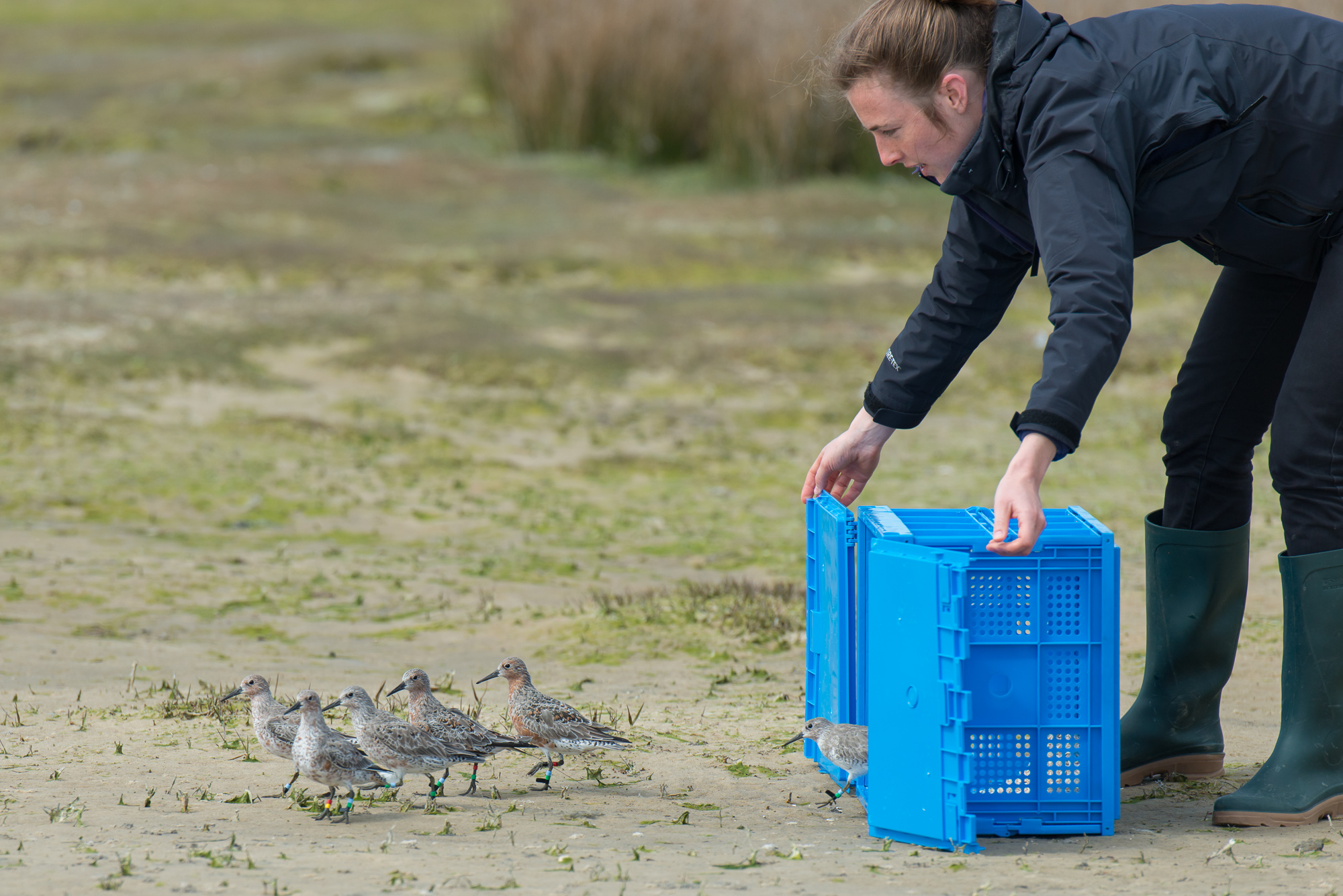 Eva Kok releasing Paul and her flock mates. The travels of Paula can be followed here. Photo: Jan Wijmenga[/caption]
Profile photo: Emma Penning
Eva Kok releasing Paul and her flock mates. The travels of Paula can be followed here. Photo: Jan Wijmenga[/caption]
Profile photo: Emma Penning
Francois Vézina
I am a Professor of ecophysiology at the Université du Québec à Rimouski, Québec, Canada. My team’s research focuses on reversible physiological adjustments that allow birds to face environmental constraints. More precisely, we study physiological mechanisms helping birds to deal with challenging periods such as cold winters, migration and reproduction. I am particularly interested by phenotypic transitions occurring during changes of life-history stages.
From 2004 to 2008 I had the privilege to work with Theunis as a postdoctoral fellow at the NIOZ Royal Netherlands Institute for Sea Research. This was a very fun and productive period in my career which greatly influenced my thinking and my way of doing science. My work at NIOZ, which continues to this day through papers written in collaboration with Theunis, focussed on energetics, thermal acclimation and seasonal cycles in Red Knots. I was interested in how these birds adjust their phenotype to deal with winter conditions. This research also led to the opportunity to study knots right after their arrival on their Arctic breeding ground at the Canadian Forces Station Alert on Ellesmere Island, Nunavut, Canada. The period of transition between migration and breeding seems critical for these birds and involve significant physiological changes at a time where food resources can be scarce and thermoregulation costs can be very high. It is definitely a very interesting time.
[caption id="attachment_3325" align="alignnone" width="1280"]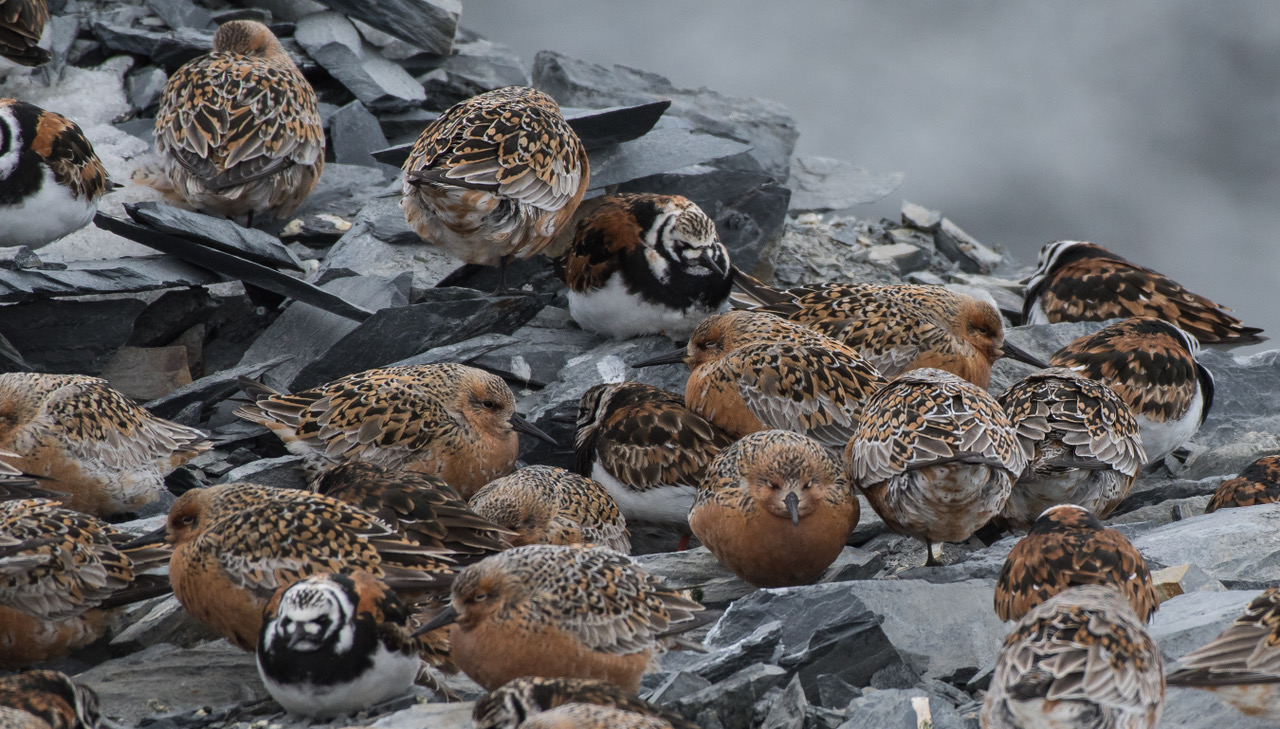 Red Knots just arrived from their migration - less than a day before the photo was taken - and recovering from the flight (they actually arrived during a blizzard). Photo: François Vézina [/caption]
As a professor, my recent work on thermal acclimation focussed mostly on passerine birds, such as black capped chickadees. My lab is equipped with facilities, very much inspired from those developed by Theunis at NIOZ, to work on captive birds in thermal chambers and outdoor conditions. There, my students and I are studying phenotypic transitions in another amazing bird, the snow bunting. We study its capacity to endure extreme cold and its remarkable ability to migrate through a wintery landscape and deal with an even harsher environment when it arrives on its Arctic breeding ground, up to a month before breeding. The phenotypic changes occurring in both snow buntings and shorebirds during the important transition between migration and breeding in the High Arctic is the main theme of our current work at Alert.
[caption id="attachment_3324" align="alignnone" width="1280"]
Red Knots just arrived from their migration - less than a day before the photo was taken - and recovering from the flight (they actually arrived during a blizzard). Photo: François Vézina [/caption]
As a professor, my recent work on thermal acclimation focussed mostly on passerine birds, such as black capped chickadees. My lab is equipped with facilities, very much inspired from those developed by Theunis at NIOZ, to work on captive birds in thermal chambers and outdoor conditions. There, my students and I are studying phenotypic transitions in another amazing bird, the snow bunting. We study its capacity to endure extreme cold and its remarkable ability to migrate through a wintery landscape and deal with an even harsher environment when it arrives on its Arctic breeding ground, up to a month before breeding. The phenotypic changes occurring in both snow buntings and shorebirds during the important transition between migration and breeding in the High Arctic is the main theme of our current work at Alert.
[caption id="attachment_3324" align="alignnone" width="1280"]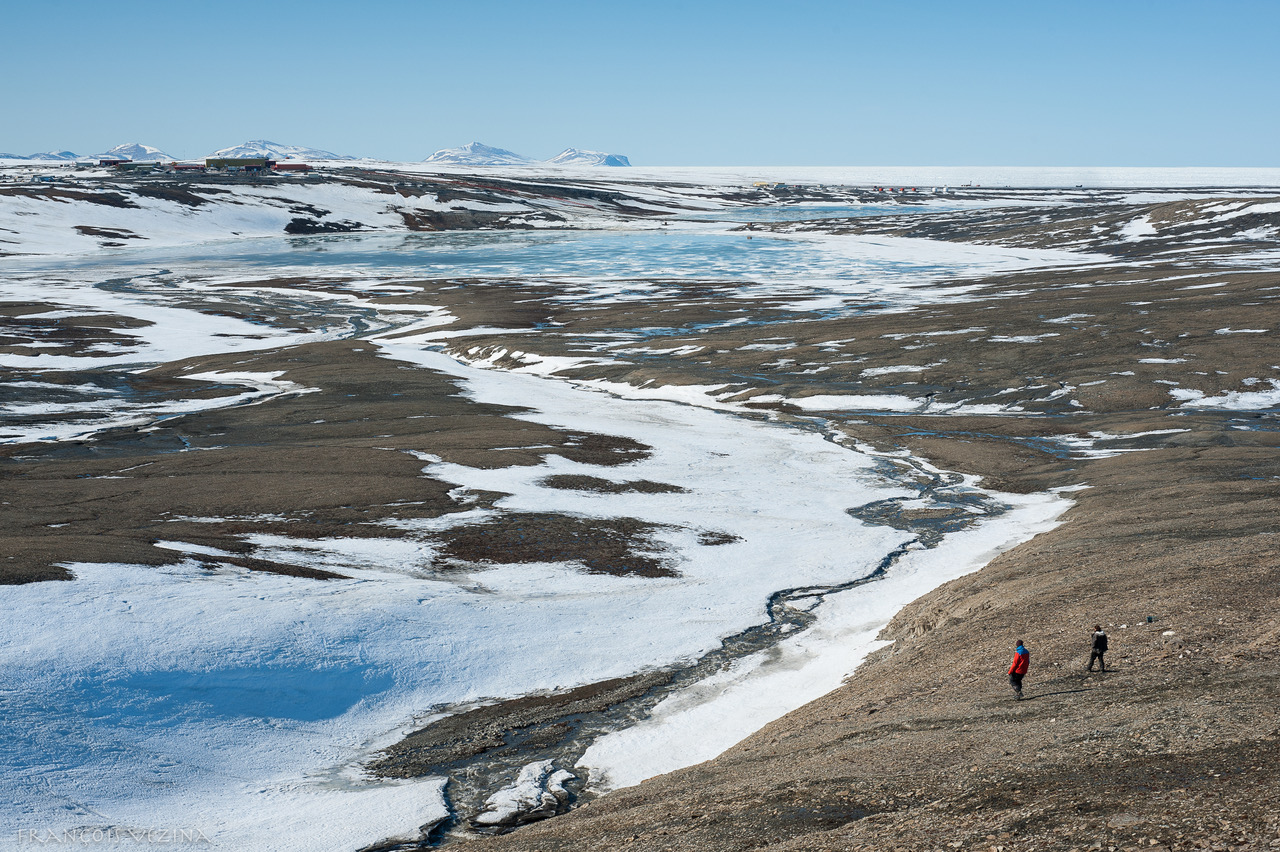 Ellesmere Island, Nunavut, Canada. Photo: François Vézina[/caption]
Profile photo: Audrey Le Pogam.
Ellesmere Island, Nunavut, Canada. Photo: François Vézina[/caption]
Profile photo: Audrey Le Pogam.
Grant Pearson
Coordinator Anna Plains and Roebuck Bay Benthic Invertebrate Mapping 1996-2016: AnnRoeBIM. Global Flyway Network|Australia.
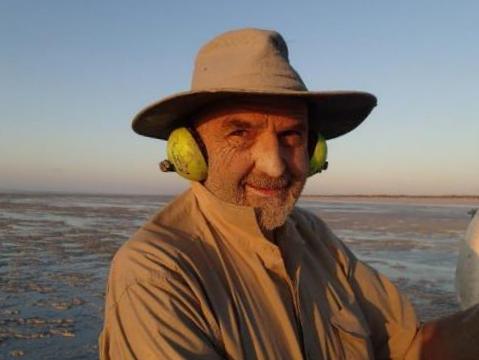 Grant Pearson in 2016 sampling at Eight Mile Beach[/caption]
Grant Pearson in 2016 sampling at Eight Mile Beach[/caption]
Han Olff
Professor at the University of Groningen, The Netherlands.
Hong-Yan (Nicky) Yang
I'm a volunteer PhD candidate in the Conservation Ecology Group at the University of Groningen (RUG). I'm also a freelance ornithologist in China at present, based in Beijing. I'm interested in the role of shorebirds in the intertidal ecosystem and how birds respond to their constantly changing environment. I have been working on waterbirds, especially Red Knots, since 2003, witnessing how rapid habitat changes shaped the distribution and populations of shorebirds in a pretty dramatic way in the East Asian–Australasian Flyway.
[caption id="attachment_1997" align="alignnone" width="591"]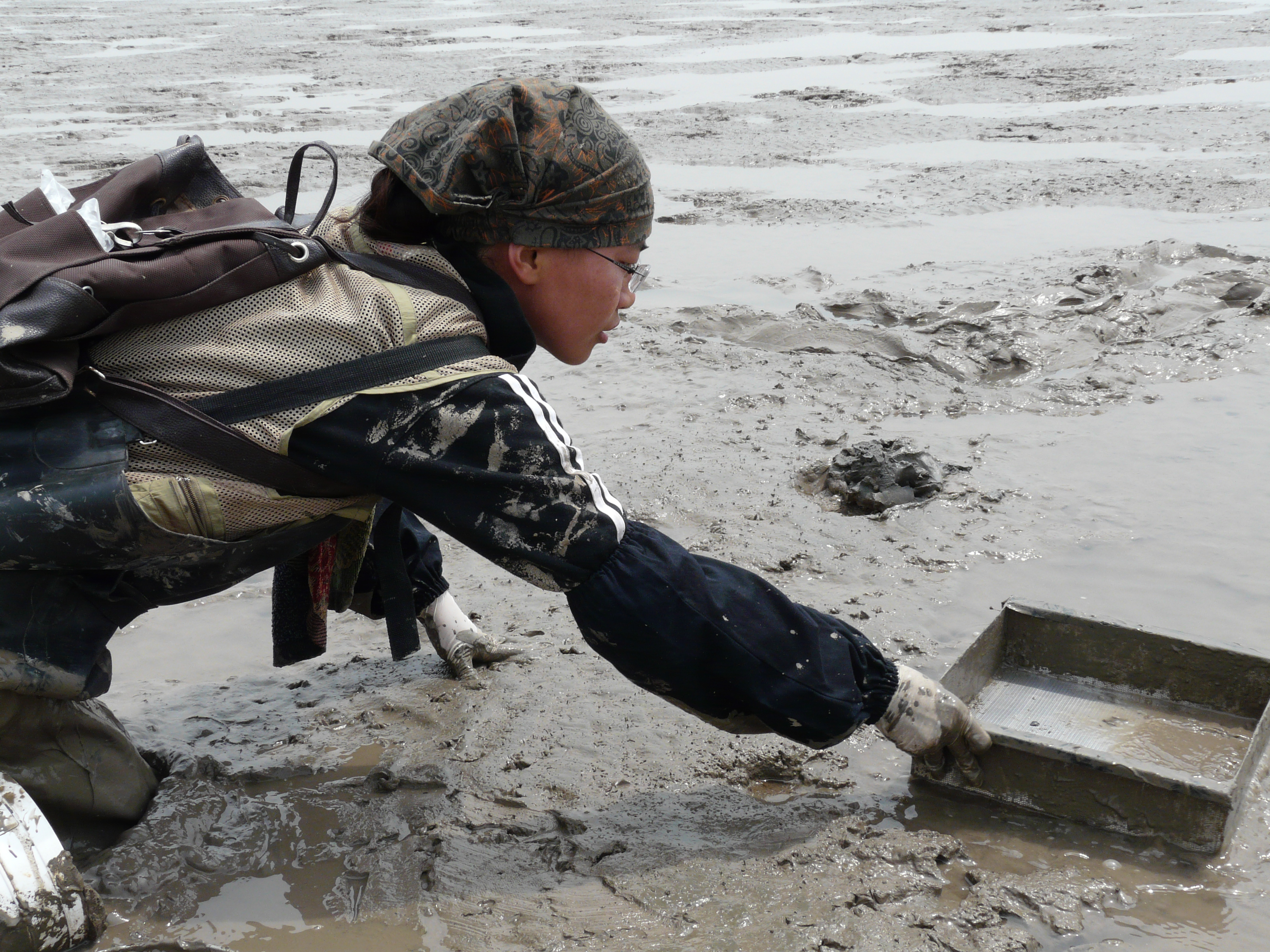 Hong-Yan Yang sampling the mudflats of Bohai Bay. Photo: Bing Chen[/caption]
I received my Chinese PhD degree at Beijing Normal University (BNU) in 2012. My Chinese PhD thesis was about the population changes, habitat usage and food choice of Red Knots in the Yellow Sea Ecoregion. We found that Red Knots staged in northern Bohai Bay for a relative short time but fueled up very well, foraging on very small bivalves, and that the size reduction of bivalves was caused by local fishery. In spite of their flyway populations continuously declining, the staging populations of two Red Knots subspecies became highly concentrated in northern Bohai Bay because of the rapid habitat loss in the Yellow Sea.
[caption id="attachment_1994" align="alignnone" width="563"]
Hong-Yan Yang sampling the mudflats of Bohai Bay. Photo: Bing Chen[/caption]
I received my Chinese PhD degree at Beijing Normal University (BNU) in 2012. My Chinese PhD thesis was about the population changes, habitat usage and food choice of Red Knots in the Yellow Sea Ecoregion. We found that Red Knots staged in northern Bohai Bay for a relative short time but fueled up very well, foraging on very small bivalves, and that the size reduction of bivalves was caused by local fishery. In spite of their flyway populations continuously declining, the staging populations of two Red Knots subspecies became highly concentrated in northern Bohai Bay because of the rapid habitat loss in the Yellow Sea.
[caption id="attachment_1994" align="alignnone" width="563"]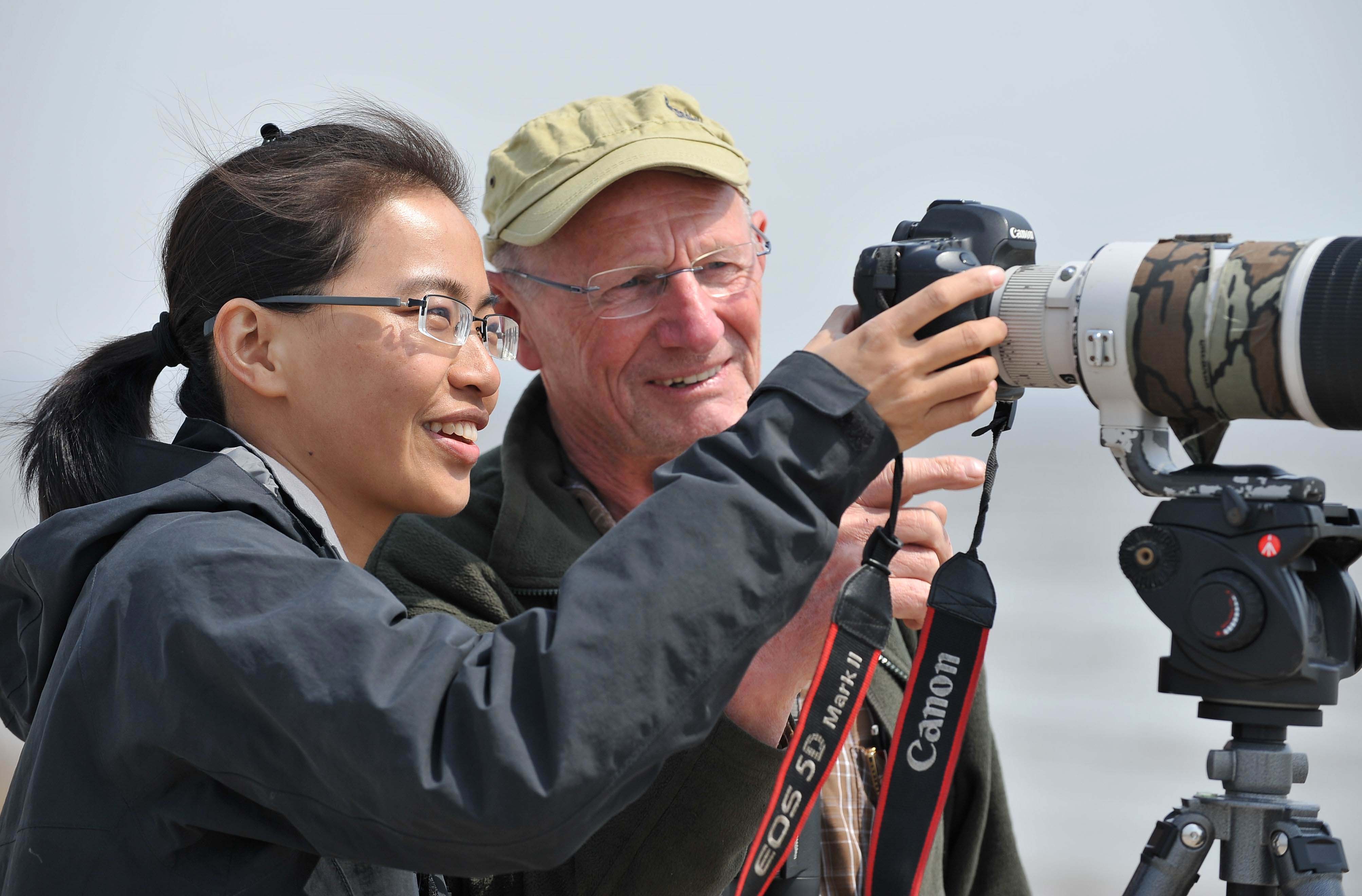 Hong-Yan Yang with photographer Jan van de Kam. Photo: Jun Yan[/caption]
I was a post-doctoral researcher in the College of Nature Conservation at Beijing Forest University (BFU) during 2012-2016. I focused on habitat choice of Red Knots and the relationship between Red Knots and their main food, Potamocorbula laevis, in northern Bohai Bay. The small-sized Potamocorbula laevis occurred in surprisingly high densities in the mudflats but were not even-distributed. Red Knots preferred the higher density areas and fed as long as they could during low tide.
In 2013, I was rewarded a fund from the National Natural Science Foundation of China for my research on Red Knots in northern Bohai Bay. At present I'm working on this project, which related to my previous post-doctoral work.
Profile photo: Bing Chen
Link: https://www.linkedin.com/in/hong-yan-nicky-yang-b5516759
Hong-Yan Yang with photographer Jan van de Kam. Photo: Jun Yan[/caption]
I was a post-doctoral researcher in the College of Nature Conservation at Beijing Forest University (BFU) during 2012-2016. I focused on habitat choice of Red Knots and the relationship between Red Knots and their main food, Potamocorbula laevis, in northern Bohai Bay. The small-sized Potamocorbula laevis occurred in surprisingly high densities in the mudflats but were not even-distributed. Red Knots preferred the higher density areas and fed as long as they could during low tide.
In 2013, I was rewarded a fund from the National Natural Science Foundation of China for my research on Red Knots in northern Bohai Bay. At present I'm working on this project, which related to my previous post-doctoral work.
Profile photo: Bing Chen
Link: https://www.linkedin.com/in/hong-yan-nicky-yang-b5516759
Jan van Gils
I am a direct colleague of Theunis at Royal NIOZ Netherlands Institute for Sea Research, where I work as a senior scientist using shorebirds as my ‘model organisms’.
My current interest centers around the role that migrant shorebirds play as connecting agents between ecosystems on a global scale. Ecosystems are currently changing rapidly, but at various rates and in different directions. Shorebirds travel annually through different ecosystems, and thus deal with the problem that adapting to changes in one system has consequences for the ‘adaptability’ to the changes in another system. A most obvious example is the rapid warming of the high Arctic affecting red knot body size in a negative way (possibly due to a ‘trophic mismatch’ during the chick phase). Having arrived at their tropical wintering grounds in West Africa, the currently smaller knots pay a price, as their shorter bills cannot access deeply burrowed bivalves anymore. My current plans are to unveil the mechanisms of ‘shorebird body shrinkage’ in the Arctic and to track shrunken individuals lifelong and worldwide using miniature satellite transmitters.
Links
Personal website at NIOZ
My publications at ResearchGate or Google Scholar or ResearcherID
[caption id="attachment_1936" align="alignnone" width="477"]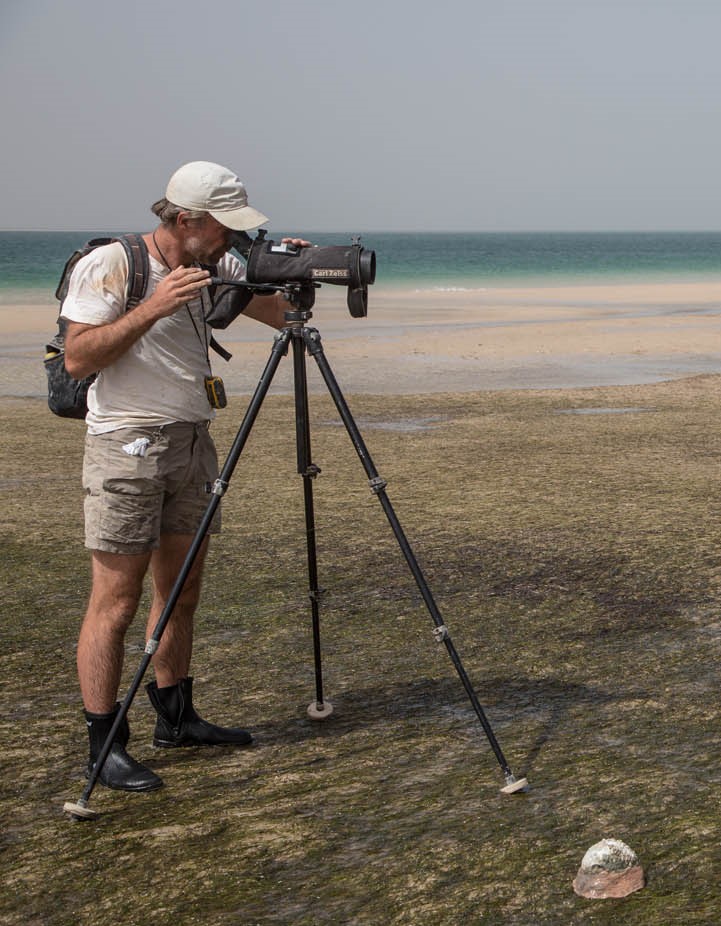 Jan van Gils at Banc d'Arguin. Photo: Jan van de Kam[/caption]
Jan van Gils at Banc d'Arguin. Photo: Jan van de Kam[/caption]
Jean-Yves Duriaux Chavarría
I am an agroecologist involved in interdisciplinary research and development that promotes sustainable intensification of agriculture and furthers the understanding of rural livelihoods and its relation to the environment. The topics I work on include agroecosystems analysis and re-design, rural livelihoods, agroforestry, farmers interests and landscape restoration. Currently I am the coordinator of the Project “Our Coffee, Our Birds” from The Cornell Lab of Ornithology and a PhD candidate at the Conservation Ecology group at Groningen University. The goal of my PhD research is to guide conservation and regeneration based on local people’s and other actors’ views. Together with my supervisors Pablo Tittonell, Ruth Howison, Viviana Ruíz-Gutierrez and Frederic Baudron, I try to identify general trends on people-nature trade-offs and synergies by studying three agricultural landscapes of increasing natural complexity and human reliance on nature as case studies. One of such landscapes is the breeding grounds of Black-tailed Godwit in Friesland (NL), where conservation of this species must take place in farmers’ grasslands and were Theunis Piersma, Ruth Howison and others are working with the Grasslands LifeIP project to enhance conservation of Meadow Birds. Within this project, my research seeks to find ways to maximize farmers’ participation and benefits to people and nature through the understanding of farmers’ capacity and interest to participate in conservation. Please find more information at https://bit.ly/duriauxRG or write me at jy.duriaux@morepeoplemoretrees.com
Jeroen Reneerkens
As a post-doctoral researcher in the Conservation Ecology Group at the University of Groningen (RUG) I have the privilege to study the ecology and evolution of Sanderling migration. While I have been fascinated by bird migration since I was a kid, my real interest and focus on shorebirds came during my MSc-projects on the brooding behaviour of American Golden Plovers in relation to ambient temperature and age of the chicks (published here), and on endocrinology in Red Knots (several published articles, e.g. this one). During both MSc-projects I got introduced to, and fell in love with, the (sub)Arctic and its breeding shorebirds; first at Churchill along the Hudson Bay in Canada, later at the most northern settlement on Earth at Alert, Ellesmere Island, Canada. It was therefore a dream come true when Theunis invited me to do a PhD with him on yet another field of shorebird biology; the functional aspects of changes in preen wax composition in shorebirds allowing me to continue studying (Arctic) shorebirds. Among others, in an experiment with a trained sniffer dog, I discovered that the seasonal shift in preen wax composition may increase the olfactory crypsis of ground-nesting shorebirds. Next to studying preen waxes, I got the opportunity during my PhD to visit both High Arctic Greenland and the Banc d’Arguin, Mauritania for shorebird research. It was at those locations, and especially the Danish field station in Zackenberg, Northeast Greenland, where the seeds for the long-term project on Sanderlings were planted.
[caption id="attachment_1953" align="alignnone" width="471"]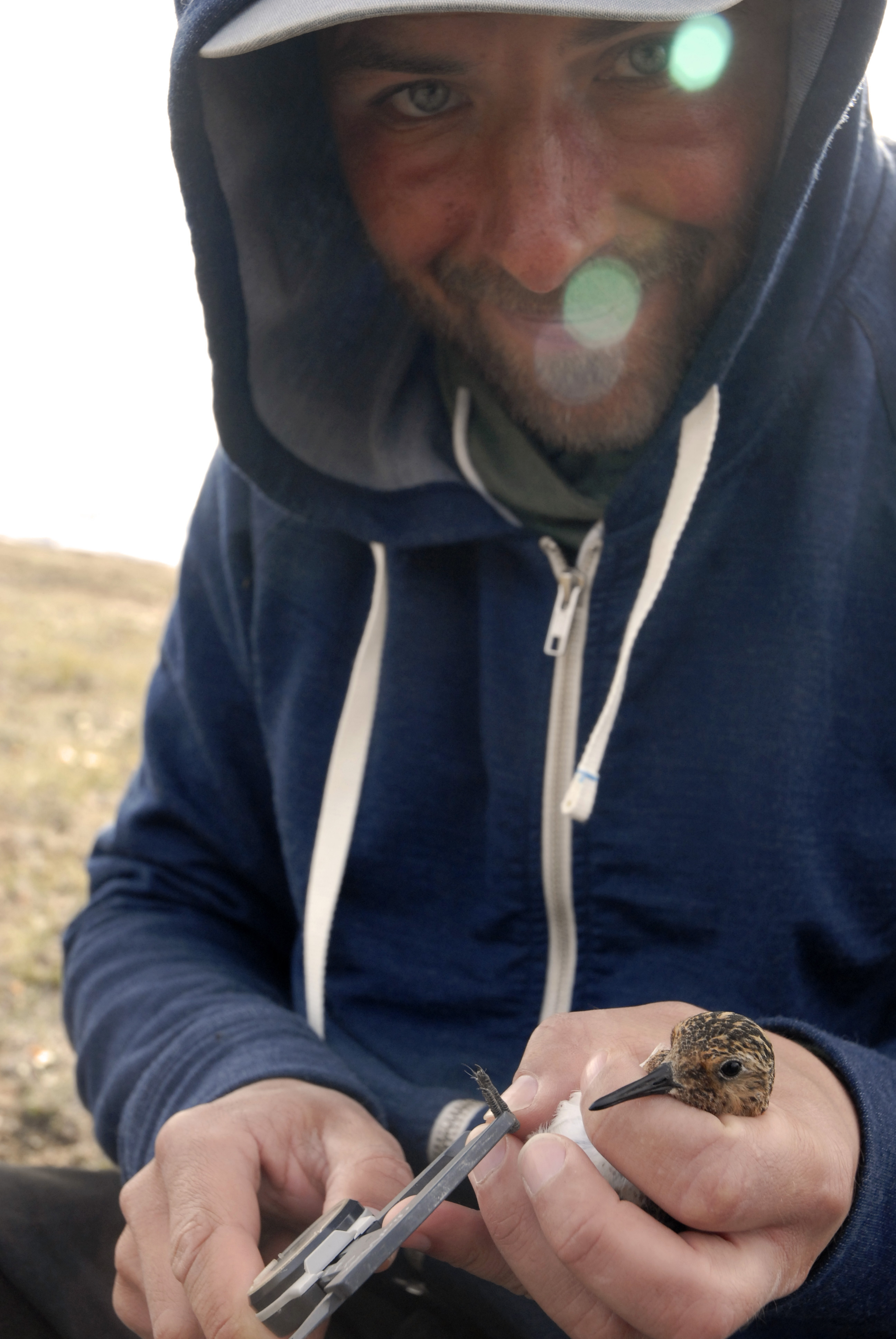 Jeroen Reneerkens in Zackenberg, ringing a Sanderling. Photo: Michelle Schollert[/caption]
My current research explores the demography of Sanderlings aiming to understand the costs and benefits of intra-population migration strategies. Sanderlings are an ideal study species for such studies because among many other benefits they (1) are relatively easy to study at the Arctic breeding grounds, compared to most other long-distance migratory Arctic breeding shorebirds in combination with (2) being visible during migration and winter to a large network of volunteer observers along the East Atlantic flyway between northern Scotland and Namibia. This research is done in close collaboration with many co-workers both professional and volunteers along the entire flyway.
I am also part of the editorial boards of Ibis (as an associate editor) and Wader Study.
You can view my publications at my profiles on ResearchGate, Google Scholar, and the University of Groningen. I am particularly proud of the long-term study on Sanderlings showing the (lack of) consequences of predators and food on reproductive timing, published in Ecology & Evolution.
Profile photo: Stefan Sand
Jeroen Reneerkens in Zackenberg, ringing a Sanderling. Photo: Michelle Schollert[/caption]
My current research explores the demography of Sanderlings aiming to understand the costs and benefits of intra-population migration strategies. Sanderlings are an ideal study species for such studies because among many other benefits they (1) are relatively easy to study at the Arctic breeding grounds, compared to most other long-distance migratory Arctic breeding shorebirds in combination with (2) being visible during migration and winter to a large network of volunteer observers along the East Atlantic flyway between northern Scotland and Namibia. This research is done in close collaboration with many co-workers both professional and volunteers along the entire flyway.
I am also part of the editorial boards of Ibis (as an associate editor) and Wader Study.
You can view my publications at my profiles on ResearchGate, Google Scholar, and the University of Groningen. I am particularly proud of the long-term study on Sanderlings showing the (lack of) consequences of predators and food on reproductive timing, published in Ecology & Evolution.
Profile photo: Stefan Sand
Jordi Figuerola
I’m a senior researcher at Estación Biológica Doñana, a research institute of the Spanish Research Council (CSIC) centered around studies of the mechanisms that generate, maintain and contribute to loss of biodiversity. My collaboration with Theunis focuses on identifying the consequences of wintering in Europe or traveling to Western Africa for the survival, breeding success and fitness of Dutch Black-tailed Godwits.
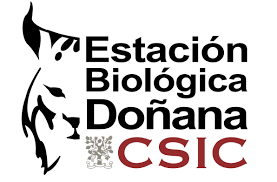 I’m also head of a research team at CIBER ESP, a biomedical research institute focusing on epidemiology and public health. My research focusses on the interplay between behavioural, evolutionary and population ecology. I combine comparative analyses, with long term monitoring and field experiments to respond to a wide range of questions related to the conservation of biodiversity, the evolution of life-history and ecological interactions.
I have been fascinated by waders since childhood but I was unable to get a grant to do the PhD working with them, something I am redressing since I am established as permanent researcher. My Master Dissertation focused on the evolution of sexual size dimorphism in waders. My PhD focused on the role of ducks in maintaining the connectivity of aquatic communities through the dispersal of animal and vegetal propagules.
I have also worked on the migratory behaviour of waders through Spain and the reproductive biology of Kentish Plover (Charadrius alexandrinus) along the Mediterranean and Atlantic coasts of Spain. My recent research focusses on the consequences of pesticide use for waders health, and the migratory behaviour of Curlew (Numenius arquata) and Black-tailed Godwits (Limosa limosa).
For an overview of my research see my personal website personal website, Research Gate and Google Scholar profile.
I’m also head of a research team at CIBER ESP, a biomedical research institute focusing on epidemiology and public health. My research focusses on the interplay between behavioural, evolutionary and population ecology. I combine comparative analyses, with long term monitoring and field experiments to respond to a wide range of questions related to the conservation of biodiversity, the evolution of life-history and ecological interactions.
I have been fascinated by waders since childhood but I was unable to get a grant to do the PhD working with them, something I am redressing since I am established as permanent researcher. My Master Dissertation focused on the evolution of sexual size dimorphism in waders. My PhD focused on the role of ducks in maintaining the connectivity of aquatic communities through the dispersal of animal and vegetal propagules.
I have also worked on the migratory behaviour of waders through Spain and the reproductive biology of Kentish Plover (Charadrius alexandrinus) along the Mediterranean and Atlantic coasts of Spain. My recent research focusses on the consequences of pesticide use for waders health, and the migratory behaviour of Curlew (Numenius arquata) and Black-tailed Godwits (Limosa limosa).
For an overview of my research see my personal website personal website, Research Gate and Google Scholar profile.
Jorge Gutiérrez
I am a tenure-track scientist at University of Extremadura (UEx), currently working in the Biology Research Group and the recently created unit Ecology in the Anthropocene (CSIC-UEx). My research interests are centred on animal ecology, and more specifically include the following areas: ecophysiology, ecoparasitology, behavioural ecology, evolutionary ecology, and conservation biology.
My PhD work investigated the energetic costs of living in saline environments and the trade-offs between osmoregulation and immunity in shorebirds. In 2010, during PhD internship at the University of Groningen, I began to work with Theunis Piersma on the functional ecology of saltglands in shorebirds. Since then we have been working on the salt-water balance of shorebirds and many other exciting topics. After my PhD, I moved back to the Netherlands with a post-doctoral grant to become, officially, part of Team Piersma at NIOZ, where I resumed my work on salt tolerance — red knots of course!
After three more post-docs on physiological and comparative ecology at various international institutions (University of Hull, Universidad Austral de Chile, and University of Lisbon), I returned to UEx as a tenure-track fellow. Although much of my work has investigated the responses of birds to heat and salt stress, my current research also focuses on the migration and breeding ecology of (shore)birds, host-parasite interactions, and the traits promoting invasion success in vertebrates. My research is question-driven. I answer my questions using a combination of empirical and comparative approaches.
For an overview of and links to my publications and more details about my research, see my ResearchGate and Google Scholar.
[caption id="attachment_1943" align="alignnone" width="438"]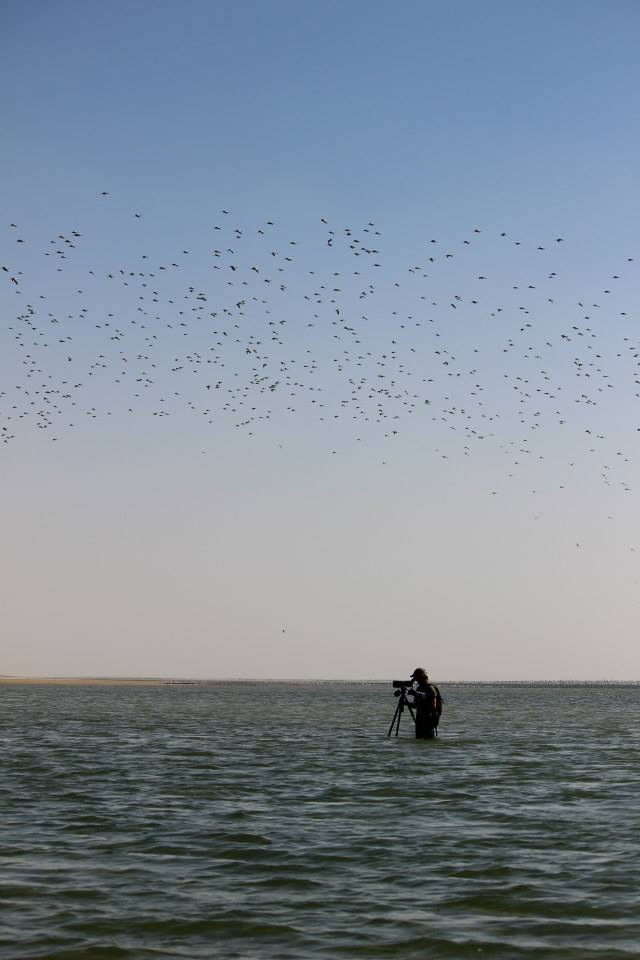 Ring-reading in Banc d’Arguin (Mauritania). Photo: Marwa Kavelaars[/caption]
Ring-reading in Banc d’Arguin (Mauritania). Photo: Marwa Kavelaars[/caption]
Jos Thie
I am a theater maker who lives in Friesland (Wergea). That is my base for making performances that are made and played everywhere in The Netherlands and beyond. From my childhood, my passion is to reach the largest possible audience with performances that stimulate the imagination and thus stimulate our thinking about ourselves and about the world that we share with each other. I like to seek the public outside the theaters to meet people who never visit theaters, but also because there are beautiful places that stimulate and challenge my imagination. That brought me as a theater maker in streets, in football stadiums, in apartment buildings, in all kinds of industrial spaces, classrooms, village community centers, etc. And in picturesque places in nature, such as the dunes of Terschelling during the Oerol Festival. I have a special connection with that festival. I have made a number of performances there, including an adaptation of Ibsen’s Peer Gynt, set in the dunes. I have also been the artistic director of the festival for two years. (I was also artistic leader of the music theater company Werk in Uitvoering in Groningen, the RO theater in Rotterdam, Tryater in Fryslân and De Utrechtse Spelen). Sytze Pruiksma I met as a theater musician and as a fanatical birdwatcher on Oerol during Peer Gynt. That has been more than ten years ago. Through him I met Theunis. And the three of us have made TRACKS for Oerol in 2017. For me, a lot more than just a performance. The work of ‘TeamPiersma’ fascinates me enormously and will not let me go. As a theater maker, I would like to remain involved in this fascinating and important work in one way or another. To be continued.
Jose A. Masero
Professor in ecology, marine biology and zoology at the Universidad de Extremadura, Badajoz, Spain.
José Alves
I am a conservation ecologist striving to understand the mechanistic bases of how biodiversity responds to changes in their environment. Currently based at the Universities of Aveiro and Iceland as a post-doctoral researcher, I address fundamental issues such as variation on demographic rates, range and habitat changes and phenological responses to climate change, as well as, applied questions in particular, consequences of organic loading on costal systems and impacts of agricultural expansion in sub-arctic environments, using migratory birds as study models.
Arctic and sub-arctic shorebirds are an ideal group in which to investigate responses to environmental change, as climatic change on their breeding grounds is increasingly apparent and their costal wintering areas are subjected to increasing levels of directly anthropogenic habitat change (e.g. land claim, pollution and resource exploitation). My research on this group of species inevitably placed me on the path of Theunis, with whom I have been collaborating over the past decade.
I deploy several approaches to study these topics particularly by developing long term datasets on the timing key events of the annual cycle (e.g. migration, breeding) and linking this to environmental and demographic parameters (breeding success, survival rates, recruitment rates); by using tracking technologies to follow specific individuals across very large spatial scales (e.g. Geolocators, and GPS/GSM tags); and by combining environmental and individual behavioural data in dynamic models to access fitness trade-offs between distinct strategies.
You can find more information on my website and keep up to date via @_JoseAAlves_.
[caption id="attachment_2674" align="alignnone" width="6016"]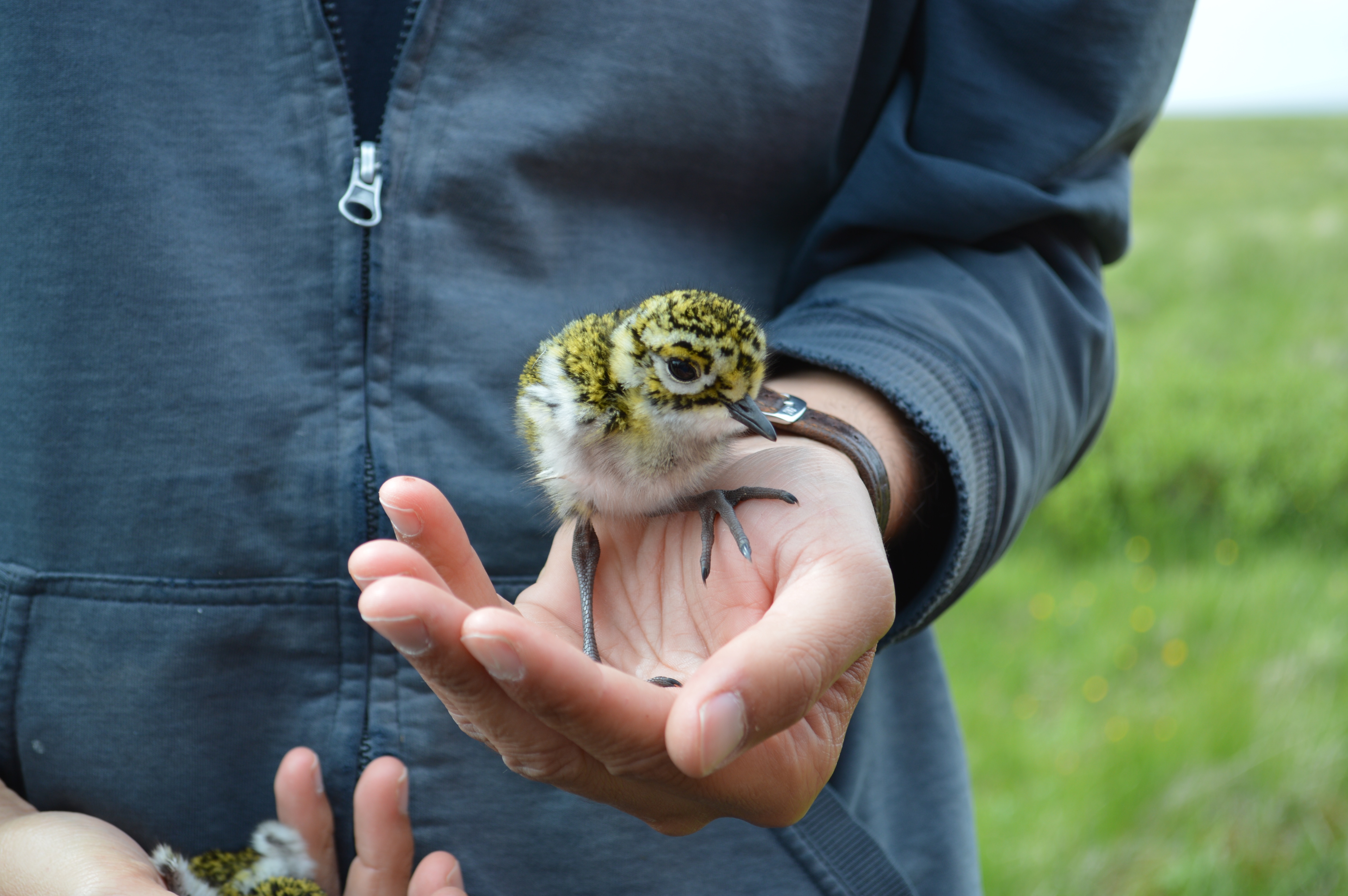 Icelandic Golden Plover chick demonstrating how its future is in our hands. Photo: Verónica Mendez[/caption]
Profile photo: Véronica Mendez
Icelandic Golden Plover chick demonstrating how its future is in our hands. Photo: Verónica Mendez[/caption]
Profile photo: Véronica Mendez
José Mª Abad “Pipe”
Researcher and technician at the University of Extremadura as part of different research projects led by Jose Antonio Masero. The main focus of my work as a researcher is ecophysiology, migration and the role of anthropogenic habitats in the life cycle of shorebirds. Black-tailed Godwit has been the main focal species, for this work, a species that is using the rice fields of our study area in Extremadura as a stopover site.
Black-tailed godwits gave me the chance to meet Theunis and part of his team in the mid 2000’s and since them we have been collaborating in different research projects. The collaboration was especially closely during the King of the Meadows initiative in which we satellite-tagged some tenths of Black-tailed Godwits in Extremadura. This was an enriching experience as catching birds with research purposes, especially to deploy sensors, is also one of my passions as technician. I am also proud of the opportunity to enjoy and collaborate with Juan Navedo’s projects in Chiloe (Chile) with the Hudsonian Godwits.
Profile photo: Manolo Parejo.
José Pedro Granadeiro
I am an Assistant Professor at Lisbon University, working in the Department of Animal Biology. My research interests focus on understanding ecological constraints, demography and spatial ecology of coastal and marine birds in different tropical and subtropical ecosystems. I started studying shorebirds in 2000, and soon after I met Theunis during a field trip to Banc d’Arguin and we have kept in contact ever since, in joint projects and supervisions. My research with shorebirds involves assessing the role of wintering and migratory shorebirds in estuarine food webs and understanding migratory connectivity within the East Atlantic Flyway.
You can find more information on my publications and research in my webpage or track recent developments at @JosePGranadeiro.

José Pedro Granadeiro
Juan G. Navedo
I am a Professor at the Institute of Marine Science and Limnology (ICML), Faculty of Science, Universidad Austral de Chile, leading the Bird Ecology Lab, where I focus my research in studying Nearctic and 'Patagonian' shorebird ecology since late 2013. Deciphering the effects of humans on wildlife conservation, either land-use changes, presence, settlement, activities or pollutants, using migratory shorebirds as models is of particular research interest in the Lab. Our ongoing projects are based in Chile, México and Spain.
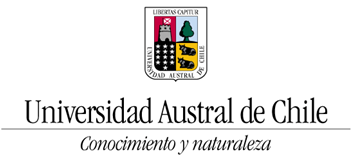 Currently I am the Director of Quempillén Experimental Station, located in Chiloé island, a shorebird paradise 40-42° South in the Pacific, where - along with Jose Masero, Jorge Gutiérrez and Jose M. Abad 'Pipe' - we have recently built the Austral-AVEX, advanced experimental aviaries ready to challenge hypothesis about shorebird ecology in the southern hemisphere. I have been appointed (2016) as a member of the Arctic Migratory Bird Initiative (AMBI) - Planning Group 4 (Reducing Threats from rice and shrimp farming in northern South America).
I am also closely linked with 'spoonbillers', especially after my studies of Eurasian Spoonbill stopover ecology in Santoña marshes, N Spain. From late 2015 to 2018, I was chairing the AEWA Eurasian Spoonbill international expert group. I have been collaborating for several years with many different people of this 'Team Piersma' in different aspects dealing with conservation of migratory birds... today we are studying one of the most striking long-distance migrants, Limosa haemastica... and we have just begun!
You can find more information about teaching, projects, etc., on the ICML website, and my publications on ResearchGate. More information about the international Graduate Course in Predator-Prey Relationships here.
Profile photo: Claudio Verdugo
Currently I am the Director of Quempillén Experimental Station, located in Chiloé island, a shorebird paradise 40-42° South in the Pacific, where - along with Jose Masero, Jorge Gutiérrez and Jose M. Abad 'Pipe' - we have recently built the Austral-AVEX, advanced experimental aviaries ready to challenge hypothesis about shorebird ecology in the southern hemisphere. I have been appointed (2016) as a member of the Arctic Migratory Bird Initiative (AMBI) - Planning Group 4 (Reducing Threats from rice and shrimp farming in northern South America).
I am also closely linked with 'spoonbillers', especially after my studies of Eurasian Spoonbill stopover ecology in Santoña marshes, N Spain. From late 2015 to 2018, I was chairing the AEWA Eurasian Spoonbill international expert group. I have been collaborating for several years with many different people of this 'Team Piersma' in different aspects dealing with conservation of migratory birds... today we are studying one of the most striking long-distance migrants, Limosa haemastica... and we have just begun!
You can find more information about teaching, projects, etc., on the ICML website, and my publications on ResearchGate. More information about the international Graduate Course in Predator-Prey Relationships here.
Profile photo: Claudio Verdugo
Judy Shamoun-Baranes
Assistant professor in the interdisciplinary research group Computational Geo-Ecology, in the Institute for Biodiversity and Ecosystem Dynamics, at the University of Amsterdam, The Netherlands.
Kimberley J. Mathot
Department of Biological Sciences, University of Alberta, Edmonton, Alberta, Canada.
Very broadly, my research centers on understanding the causes and consequences of phenotypic variation across different levels of biological organization. What limits within-individual phenotypic plasticity? Why do individuals from the same populations often show consistent differences in their average behaviour (also referred to as animal personality)? How do individual level characteristics scale up to influence group level dynamics? I use both empirical and theoretical approaches to address these questions.
My current collaboration with Theunis is addressing questions related to the development of phenotypic variation (together with PhD candidate Eva Kok). How do among-individual differences in behavioural and physiological traits and trait integration develop? Do differences in early experience set individuals on different developmental trajectories? Do traits become integrated through ontogeny? We are studying this in two subspecies of red knots (Calidris canutus islandica and C. c. canutus), comparing patterns of phenotypic variation and integration across age categories, and following the development of phenotypes across multiple years in individuals receiving experimentally controlled experiences (e.g. exposure to particular food types).
[caption id="attachment_2022" align="alignnone" width="445"]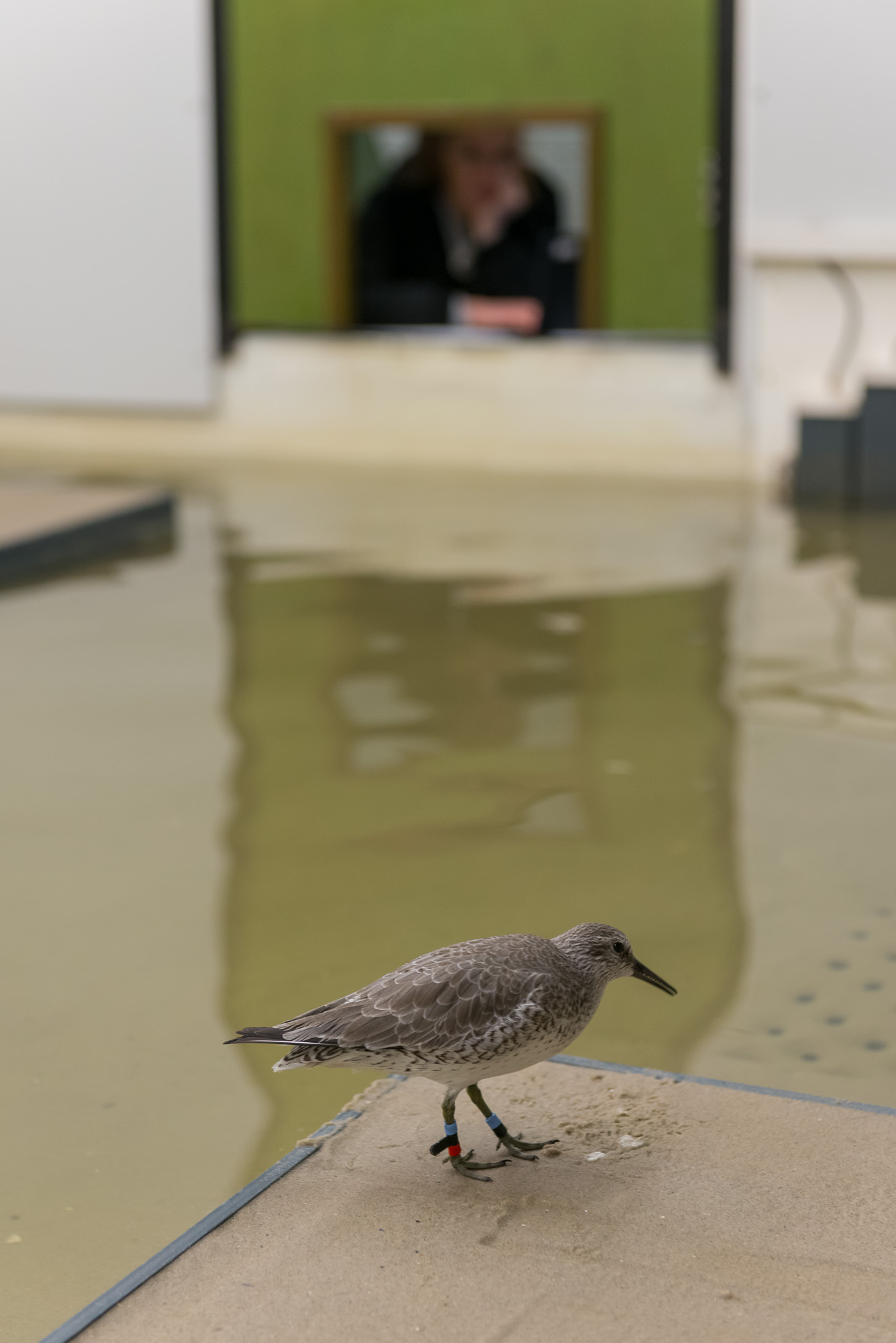 Eva Kok observing a Red Knot in the experimental arena of the NIOZ Shorebird Experiment Facility. Photo: Jan Wijmenga[/caption]
You can read more about my research here.
My publications can be accessed through:
Eva Kok observing a Red Knot in the experimental arena of the NIOZ Shorebird Experiment Facility. Photo: Jan Wijmenga[/caption]
You can read more about my research here.
My publications can be accessed through:
Klaas Sietse Spoelstra
Strategic advisor, University of Groningen, The Netherlands, focusing on "Sustainable Landscapes" related topics. Initiative leader of citizens-network-program King of the Meadow | "Kening fan'e Greide" partnering with scientists, artists, citizens, NGO's, governments and farmers.
Laura Govers
I am a passionate marine ecologist that studies ecosystem-scale processes in intertidal ecosystems across the world. As postdoctoral researcher I am based at the University of Groningen - Conservation Ecology Group (The Netherland). My research mainly focuses on the Wadden Sea, where I study long-distance interactions between mudflats and islands, biogeomorphological processes, focusing on the lower trophic levels - especially seagrasses. Although my research is discovery-driven, I strongly collaborate with managers to contribute to evidence-based coastal conservation.
I collaborate with Theunis in mission to communicate science to a broader audience (e.g. through organizing the scientific artistic seminar "Bird Senses of Places" on art festival Oerol in 2016 see the Science and Art page), and within the Griend project where we study (amongst others) the importance of the tiny island Griend for waders, especially Sanderlings.
[caption id="attachment_2037" align="alignnone" width="410"]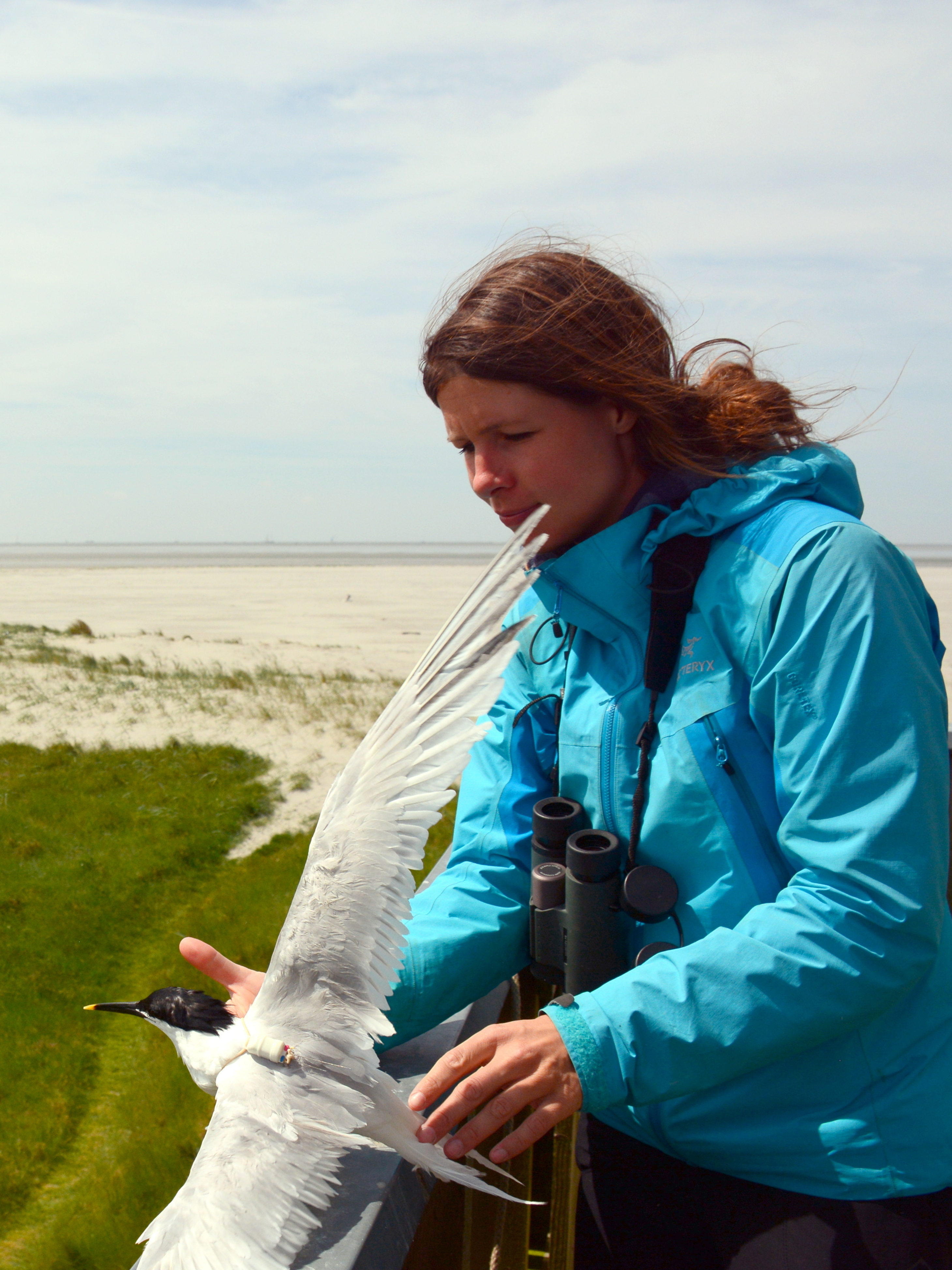 Laura with a Sandwich Tern that was just issued a data logger (Ecotone ALLE-55 GPS UHF 4g). Photo: Abel Gyimesi[/caption]
For update about my work in the Wadden Sea, see the Griend blog (in Dutch).
Laura with a Sandwich Tern that was just issued a data logger (Ecotone ALLE-55 GPS UHF 4g). Photo: Abel Gyimesi[/caption]
For update about my work in the Wadden Sea, see the Griend blog (in Dutch).
Lee Tibbitts
Alaska Science Centre, U.S. Geological Survey. Global Flyway Network associate / ARGOS Tracking and Tracing. Profile ‘under construction’. Photo: Frontier scientists.
Martin Bulla
Behavioural ecologist exploring biorhythms, especially those found in the wild and during parental care. Passionate about the shorebirds and the Arctic. His recent comparative work – on incubation rhythms – brought together shorebird enthusiasts from across the Globe and in doing so celebrates an open and collaborative spirit of our ‘shorebird community’. Martin conducted this work (see behind the scene), and discovered the Arctic, during his PhD at Max Planck Institute for Ornithology in Seewiesen, where he is currently a post-doctoral researcher. He is also a postdoc at the Czech University of Life Sciences Prague. He currently investigates biorhythms in uniparentally incubating shorebirds and endogenous rhythms of red knots. Bellow your find the additional links to his publications:
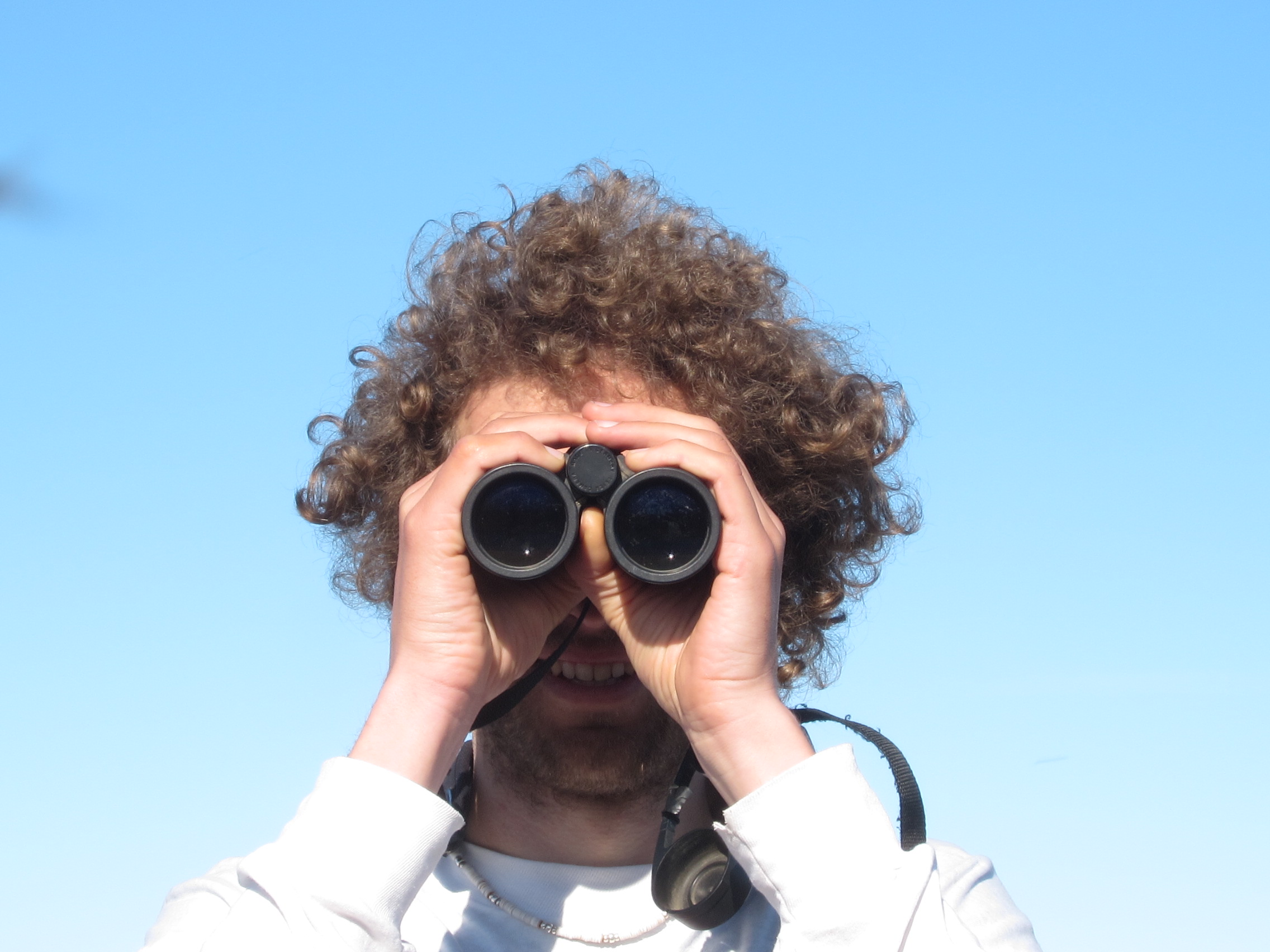
Mo Verhoeven
I am a Team Piersma researcher that tries to understand what the source is of the variation in the migration of Black-tailed Godwits. I work at the University of Groningen, Conservation Ecology Group, as PhD student.
We do our fieldwork in Fryslân with a large team, which is a lot of fun! However, most importantly it involves breeding waders, they are fantastic! When we go out in the morning the Godwits, Lapwing and Snipe are displaying! It is great to be a part of their intimate world and to think about their motives!
After our field season we get to follow “our” birds from behind our computers at the University of Groningen. It is great to see the variation in strategies and to try and understand why individual godwits migrate the way they do!
[caption id="attachment_3289" align="alignnone" width="1500"]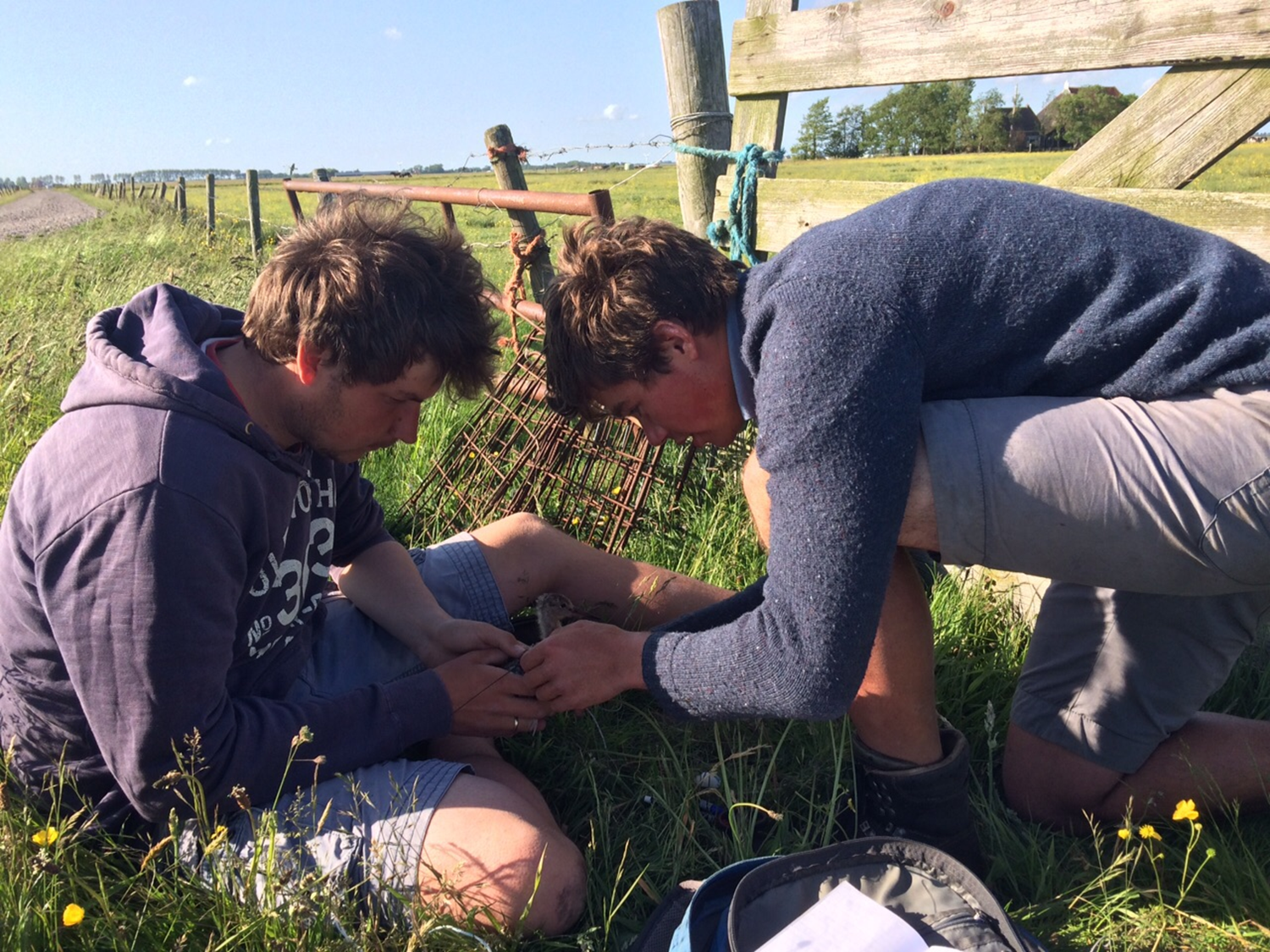 Outfitting a juvenile Black-tailed Godwit with a satellite transmitter.[/caption]
p.s. my right knee is always dirty, see pictures.
[caption id="attachment_3290" align="alignnone" width="520"]
Outfitting a juvenile Black-tailed Godwit with a satellite transmitter.[/caption]
p.s. my right knee is always dirty, see pictures.
[caption id="attachment_3290" align="alignnone" width="520"]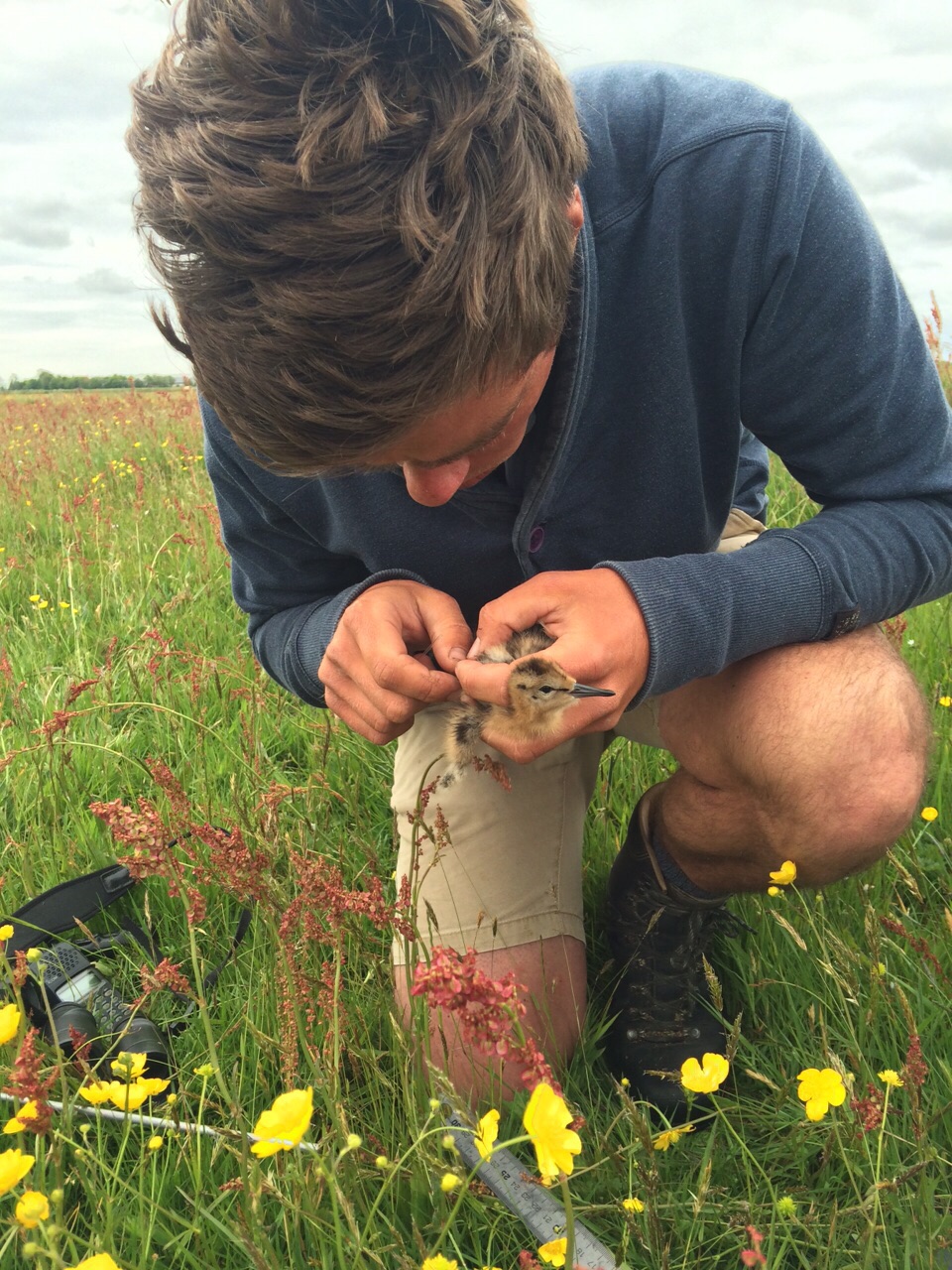 Measuring the growth of a recaptured Godwit chick.[/caption]
Measuring the growth of a recaptured Godwit chick.[/caption]
Nathan Senner
NEWS: Starting in January 2019, I am assistant professor in the Department of Biological Sciences at the University of South Carolina.
From 2012 to 2015, I was a post-doctoral fellow in the Conservation Ecology Group at the University of Groningen in The Netherlands with shorebird guru, Dr. Theunis Piersma. While in The Netherlands, I worked to understand how Black-tailed Godwit migrations and breeding biology were being affected by both global climate change and agricultural intensification.
As of November 2015, I began a new post-doctoral position in the Division of Biological Sciences at the University of Montana with Dr. Zachary Cheviron. In Montana I am working on two projects: 1) examining the adaptations of Black-tailed Godwits to high altitude migration, and 2) determining how populations of Deer Mice are regulated differently in extreme environments..
I received my B.A. from Carleton College in 2004 and spent the next year as a Thomas J. Watson Fellow following the migration of Hudsonian Godwits from their breeding areas in Arctic Canada to their non-breeding sites at the southern tip of South America. In 2007, I began a PhD with John Fitzpatrick at Cornell University in the Department of Ecology and Evolutionary Biology and the Cornell Lab of Ornithology. My dissertation work, completed in fall 2012, investigated how global climate change was differentially impacting two separate breeding populations of Hudsonian Godwits.
[caption id="attachment_806" align="alignnone" width="453"]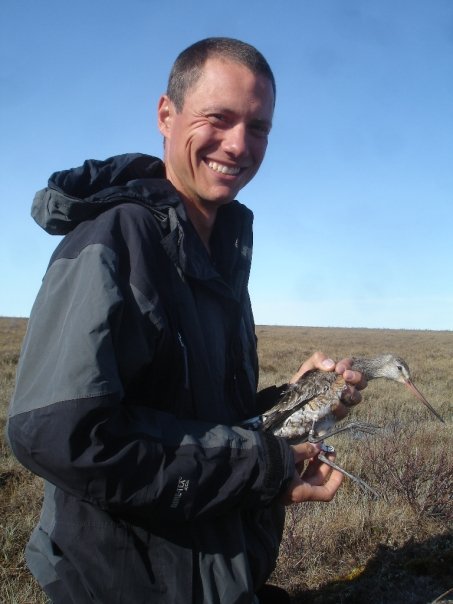 With a Hudsonian Godwit. Photo: Jay McGowan[/caption]
With a Hudsonian Godwit. Photo: Jay McGowan[/caption]
Nicola Crockford
Theunis has been fostering my devotion to waders for more than three decades. For the past decade or so, in my role at the RSPB (BirdLife in the UK) leading BirdLife International’s Global Flyway policy work, it has been a pleasure to help use the Global Flyway Network’s work to deliver conservation action of benefit to the birds, especially in the Yellow Sea. My conservation objectives include:
- To help save the Yellow Sea for Spoon-billed Sandpiper (current priority for the RSPB and BirdLife) and other migratory waterbirds (such as Red Knot, an old favourite of mine since doing an undergraduate thesis on their feeding ecology on spring migration in arctic Norway), including through World Heritage nomination.
- To help conserve coastal wetlands along the East Atlantic Flyway, especially through support to the Bijagós Archipelago in Guinea-Bissau via the Arctic Migratory Bird Initiative.
- To support the development and implementation of intergovernmental species action plans e.g. under the African-Eurasian Migratory Waterbirds Agreement (AEWA), for species such as Eurasian Curlew and Black-tailed Godwit.
![YSea-get-together-2013-09-29 16.13.44[3]](https://www.globalflywaynetwork.org/gfn/wp-content/uploads/2017/05/ysea-get-together-2013-09-29-16-13-443.jpg) Nicola Crockford, Theunis Piersma (left) and David Melville (middle) deeply involved in Yellow Sea protection plans (IWSG meeting 2013 Wilhelmshaven, Germany)[/caption]My recent publications
Three have been published in early 2017 in Bird Conservation International. Two are on Slender-billed Curlew given my role as the Chair of the Slender-billed Working Group:
Nicola Crockford, Theunis Piersma (left) and David Melville (middle) deeply involved in Yellow Sea protection plans (IWSG meeting 2013 Wilhelmshaven, Germany)[/caption]My recent publications
Three have been published in early 2017 in Bird Conservation International. Two are on Slender-billed Curlew given my role as the Chair of the Slender-billed Working Group:
- Volunteer survey effort for high-profile species can benefit conservation of non-focal species DOI
- The potential breeding range of Slender-billed Curlew Numenius tenuirostris identified from stable-isotope analysis: DOI
- A global threats overview for Numeniini populations: synthesising expert knowledge for a group of declining migratory birds: DOI
Oane Galama
I am an independent scientist (PhD, MSC) with background in water technology, biotechnology and environmental sciences. My current research interests are involving (but certainly not limited to!): energy flows in society and farming systems, regenerative farming, fixing carbon in soils and renewable energy systems. I work at my own company ‘Galama Sustainable Solutions’ and am especially active in the field of energy and sustainability. All process, life and matter contain (are) energy and exchange energy with their surroundings. Live cycle energy (or exergy) analysis is therefore in my opinion key in identifying (un)sustainable activities. Since 2020 I have become a guest researcher at the University of Groningen and I am working with Theunis in the field of sustainable agriculture. I was raised on a farm in south-west Fryslân and met Theunis many years back when the Godwit and Ruffs project started in this area. But I also know Theunis from the Fierljeppen, a Frisian sport, we both enjoy during the summer months. Theunis as a spectator myself as a jumper (see photo). Questions I am typically interested in are how can farmers become energy consumers again? How can we produce nutrient and mineral dense foods? How can we market foods based on content not bulk weight? How can we make low-input farming become mainstream farming? Can we save, for instance godwits, from extinction by lowering the amount of energy we extract from our ecological system? Or even better can we, through good farming practices, enhance the amount of energy stored in soils and out ecological system in such way that we can extract more energy, while leaving more energy? Please find more information on my company website or my Google Scholar or LinkedIn.
Paul W. Howey
Microwave Telemetry, Inc. The company provides state-of-the-art avian (and marine) tracking technology for scientists.
Pierrick Bocher
Prof. Dr. Pablo Tittonell
Pablo Tittonell is WWF-Chair Professor on Resilient Landscapes for Nature and People at the Groningen Institute of Evolutionary Life Sciences, of Groningen University in The Netherlands, and scientists at the Agroecology and Ecological Intensification Research Unit of CIRAD (Centre de coopération Internationale en Recherche Agronomique pour le Développement) in Montpellier, France. Since 2017 he has been nominated Principal Research Scientist by Argentina’s National Council for Science and Technology (CONICET) affiliated to the Instituto Nacional de Tecnología Agropecuaria (INTA), in San Carlos de Bariloche, Argentina. He is the former national coordinator of the Natural Resources and Environment Program of INTA, coordinating the work of more than 1500 researchers nation-wide, and former Chair Professor of Farming Systems Ecology at Wageningen University, in The Netherlands, where he co-designed and coordinated the successful Master program on Organic Agriculture. He acts as external Professor at the Ecole Doctorale GAïA of the University of Montpellier, France and at the National University of Lomas de Zamora, Buenos Aires, Argentina. He is an agronomist by training and worked both in the private sector and in academic/research organisations. He holds a PhD in Production Ecology and Resource Conservation and his areas of expertise include soil fertility, agroecology, biodiversity and systems analysis. Hi recent areas of interest include human-nature interactions in multifunctional, nutrition-sensitive landscapes, and their adaptation to global change. He participated in a diversity of research and development projects around the world on design, resilience and adaptation of farming systems, with a focus on social-ecological processes at the agriculture-nature interphase. His career in the international research arena started at the Tropical Soil Biology and Fertility (TSBF) Institute of CIAT in Nairobi, Kenya, and includes a period at the University of Zimbabwe, where he run research and educational programmes on soil fertility, conservation agriculture and agroecosystems modelling. He is a member of the International Commission on Sustainable Agriculture Intensification (COSAI: https://wle.cgiar.org/cosai/). Editor of the journal Agricultural Systems and editorial board member of Global Food Security, Agronomy for Sustainable Development and Land Degradation and Development. He published more than 150 scientific papers in international journals (h-index 40; top 1% most cited authors in the field Agronomy in 2018, 2019 and 2020). Consults for the FAO and for several international NGOs; trained a vast number of active young researchers; and supervised PhD students and postdocs with fieldwork in Europe, Latin America, Asia and Africa.
Rocío Márquez-Ferrando
Estación Biológica de Doñana, Sevilla - Wetlands Ecology. I am interested in understanding how shorebirds change their migratory behaviour in response to environmental changes and which are the potential ecological consequences at individual and population level. During the last few years we have described the actual distribution, abundance and habitat use of the threatened continental Black-tailed Godwit (Limosa limosa) during the non-breeding season in Doñana Wetlands in southwest Spain. To study migratory strategy and habitat use I used several methods, mainly colour-ring reading and stable isotopes approaches in collaboration with Theunis´group. We now focus on how godwits in Doñana are connected to other non-breeding (in west-Africa and Iberia) and breeding sites, mainly in the Netherlands, with the aim to determine which are the ecological consequences of this migratory connectivity.
Rosemarie Kentie
Currently I am a Newton International Fellow of the Royal Society, based at the Department of Zoology at the University of Oxford, in the group of Prof Tim Coulson. I am still working with the Black-tailed Godwit dataset of Team Piersma. Here in Oxford I learn how to construct Integral Projection Models (IPM). One of my present aims is to understand the effects of laying date on population dynamics of godwits, and how population dynamics influence laying dates. In 2005 I started working as a master student with Black-tailed Godwits at the University of Groningen in Theunis Piersma’s group. The godwit research was in its second year, and it was fascinating to work with such an iconic species. In 2007 my dream came true and I started my PhD project on “Spatial demography of Black-tailed Godwits”, which I finished in 2015. I aimed to understand its population dynamics by identifying demographic bottlenecks, integrating source-sink dynamics, and fitness consequences of habitat use. During my PhD I have shown that reproduction on intensified agricultural grassland was too low for maintaining a stable population size, but that immigration from offspring hatched on traditional meadows prevented the population from going locally extinct. After my PhD I continued as a postdoctoral researcher, at the University of Groningen within the Conservation Ecology Group, where I focused on carryover effects of migration strategies, i.e. interactions between wintering site choice in the non-breeding period and reproductive output in the breeding period. You can find my publications on Google Scholar, and on ResearchGate.
Ruben Smit
Dr Ir Ruben Smit is a passionate and award winning photographer and filmmaker (De Nieuwe Wildernis / The New Wilderness). Theunis will be the ambassador for the film about the Wadden Sea Ruben is currently working on. Here is the Wad film teaser.
Ruben received a Gouden Kalf, the Rembrandt Award, and is a BBC wildlife photographer. He has a PhD degree in ecology. He launched his company Ruben Smit Productions in 2014 to produce tv-items, series and movies on nature & wildlife.
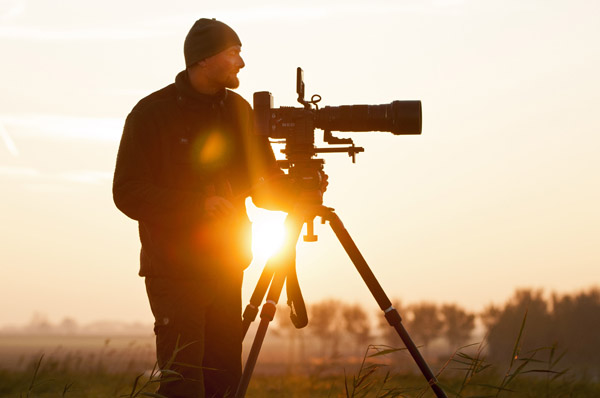 His mission; to inform and inspire people to see and experience nature.
His style: poetic, cinematographic, informative ; 'Looking beyond the obvious'.
His latest: working on a large nature documentary on the unique ecosystem of the Wadden Sea.
His mission; to inform and inspire people to see and experience nature.
His style: poetic, cinematographic, informative ; 'Looking beyond the obvious'.
His latest: working on a large nature documentary on the unique ecosystem of the Wadden Sea.

Sander Holthuijsen
My fascination for the Wadden Sea (only) started when I was 18 years old. But has never ended. Since 2001 I yearly spend up to 15 weeks per year on the mudflats, from 2008 onwards in a professional way, as research assistant for the NIOZ Royal Netherlands Institute for Sea Research. I am currently, among working on other projects, technical coordinator of the SIBES project.
I live in the picturesque town of Den Helder, only a short ferry ride away from the Island of Texel where the NIOZ is situated, and on the most western edge of the Wadden Sea.
In 2008 we have started the largest intertidal benthic survey in the world, called SIBES (Synoptic Intertidal Benthic Survey), where we sample the entire intertidal Dutch Wadden Sea at more than 5000 locations for sediment grain size and macrozoobenthos.
[gallery ids="1606,1607" type="columns"]
The sample locations are visited by boat or on foot. During fieldwork, samples are taken to assess the macrofauna on the surface or in the upper sediment layer of the tidal flats. The findings offer valuable information about the availability of benthic species as food resource for birds and fish.
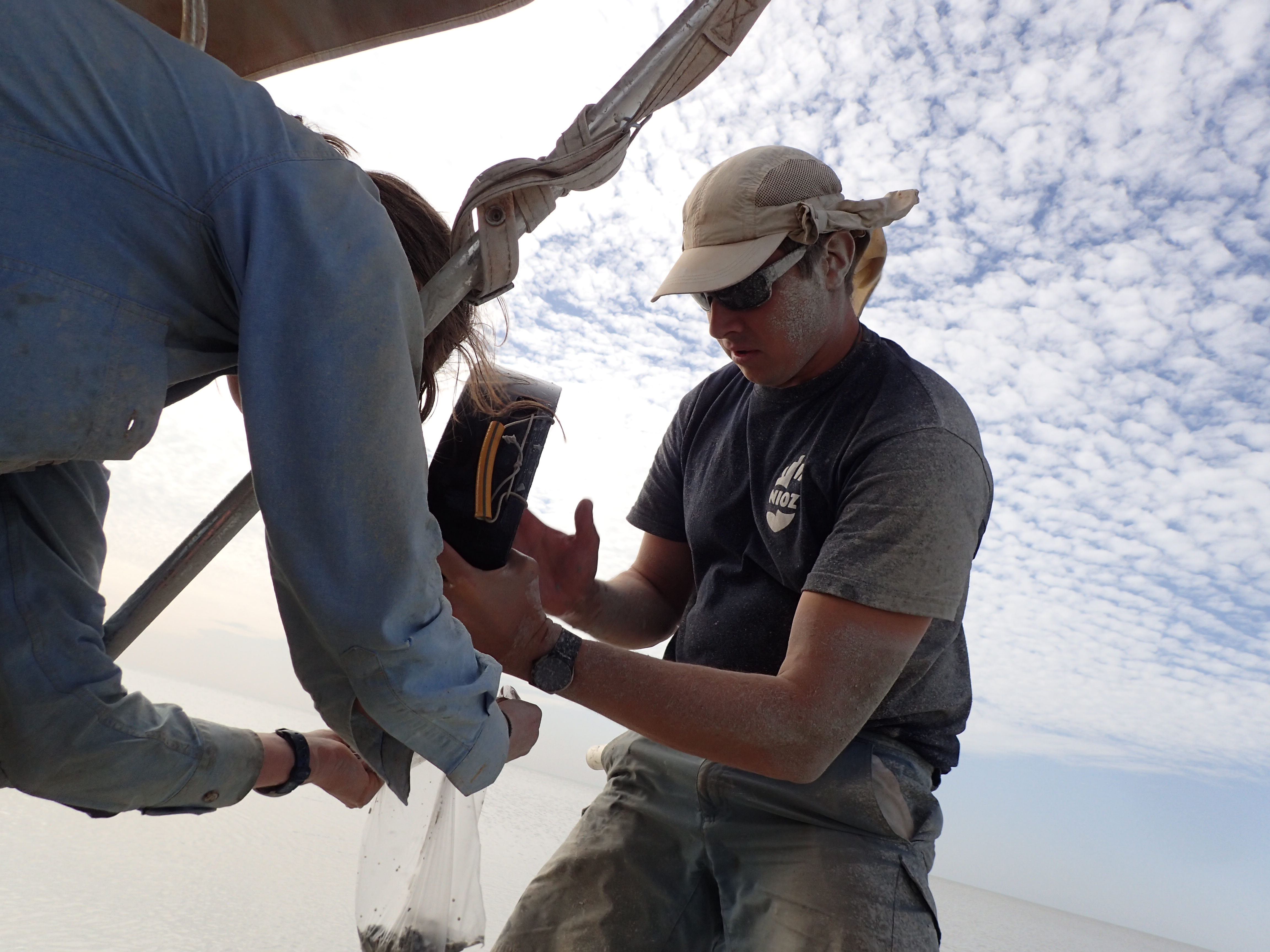 Since 2014 we expanded our efforts to a part of the German Wadden Sea adjacent to the Dutch Ems estuary. Across the world the SIBES method is implemented in a wide range of intertidal areas, ranging from Alaska to Kamchatka, from Mauritania to Australia and many more.
Movies with more information about SIBES can be found here (in Dutch) and here (in English). My publications of my work are available on ResearchGate.
Since 2014 we expanded our efforts to a part of the German Wadden Sea adjacent to the Dutch Ems estuary. Across the world the SIBES method is implemented in a wide range of intertidal areas, ranging from Alaska to Kamchatka, from Mauritania to Australia and many more.
Movies with more information about SIBES can be found here (in Dutch) and here (in English). My publications of my work are available on ResearchGate.
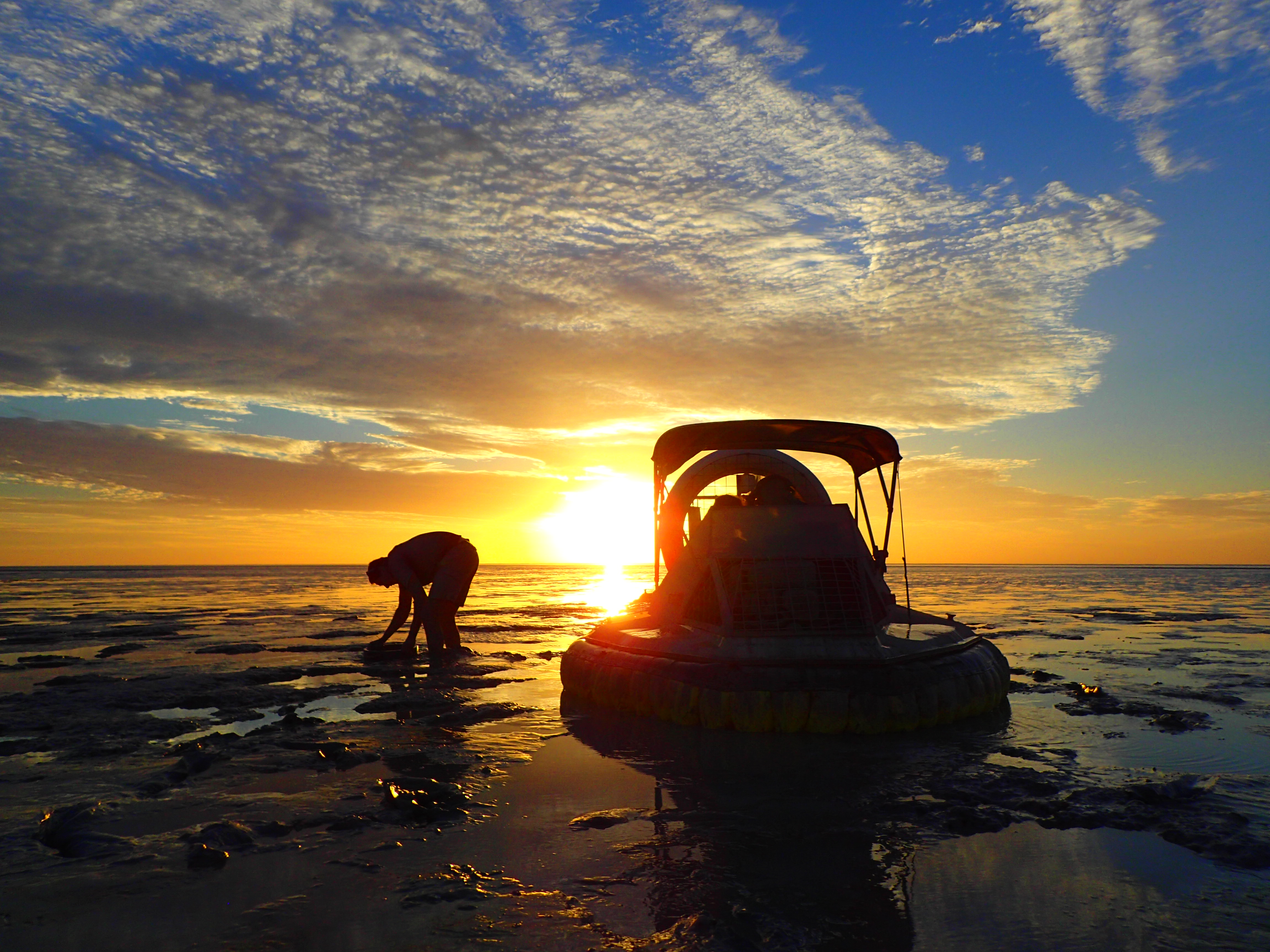
Selen Eren
I am a PhD researcher in the field of Science, Technology and Society in the department of Knowledge Infrastructures at Campus Frsylân, University of Groningen. My background is in Sociology and Philosophy of Science and Technology. I am overall interested in how science, society and technology co-shape each other. My PhD project is a part of a bigger project called Knowledge Infrastructures for Sustainability, and supervised by Anne Beaulieu, and Andrej Zwitter. The project investigates (1) how bird ecologists create knowledge claims in contemporary knowledge infrastructures where the emerging and long-standing data collection and analysis techniques are used at the same time, (2) as well as how to contribute to such knowledge infrastructures by tackling credibility issues found in the literature and observed during collaborations with ecologists. The main research question the projects aims to answer is then the following: What types of interactions, practices, and framings are needed for knowledge infrastructures (KI) to ensure the quality of scientific knowledge claims (i.e., scientific credibility) while acknowledging the shaping role that citizens, tools, models, data, and even animals play in generating such claims? I am collaborating with the Team Piersma to have a better sense of how bird ecologists create credible knowledge claims in practice. I conduct participatory observations during their meetings and fieldwork, as well as interviews when it is needed. I also join some of their conferences, and courses. This collaboration also aims to help the team in producing scientific knowledge claims that are credible in a broader sense accounting for multiple stakeholders needed to create such claims. Here are the titles of some presentations/guest lectures I gave during my research:
- A critical perspective on data and credibility in the context of conservation ecology. In MSc course Flyway Ecology at the Faculty of Science and Engineering in the University of Groningen, the Netherlands
- Creating Publics: Science-society relations. In BSc course The Birds and the Bees: Knowledge Infrastructures for monitoring sustainability at Campus Frsylan in the University of Groningen, the Netherlands
- Epistemic value of care practices: From birds in the hand to the data in the bank. In Nordic Science and Technology Conference, held virtually at Copenhagen Business School, Copenhagen, Denmark
- Enacting a non-positivist credibility in big ecology In EASST/4S Conference, held virtually/in Prague, Czech Republic
Sjoerd Duijns
I am a former PhD student of Theunis (2010 – 2014), where I studied the foraging ecology of Bar-tailed Godwits. My PhD thesis: Sex-specific foraging: The distributional ecology of a polychaete-eating shorebird is available online. I am still involved with the Bar-tailed Godwit work, together with Theunis, Jan van Gils and Eldar Rakhimberdiev. Currently I am a postdoctoral fellow at Carleton University in Canada, where I am working on the distribution and migration patterns of several shorebird species in North America using the motus wildlife tracking system. I work together with researchers from different Universities and Environment and Climate Change Canada. Like a migratory shorebird, I’m on the move again and from September onwards I will be working in Kalmar, Sweden. I will continue to work with the motus system and plan to deploy this system in Southern Sweden, which will expand the European automated telemetry network. I am a behavioral ecologist with a background and interest in foraging behavior and migration. I am interested in the mechanisms by which organisms deal with the aspects of their (changing) environment and I am fascinated how animals respond to this. Are animals phenotypically flexible or do they change their distribution and diet? These are key questions that I aim to unravel by integrating behavior, demography and population dynamics using statistical and theoretical models with empirical data. For an overview of and links to my publications and more details about my research, see my personal website, ResearchGate or Google Scholar.
Songlin Wang
Global Flyway Network associate|China. Director of the China Program of Ocean Outcomes - O2, with focus on sustainable fisheries and aquaculture. Songlin, who lives in China, is an experienced and passionate conservation professional. His international career includes work for The Nature Conservancy, World Wildlife Fund (WWF China and WWF International), and The Paulson Institute, among others. He has planned, led, and coordinated a number of large scale sustainable fisheries projects, aquaculture improvement projects, and wetlands conservation projects. His efforts helped guide the first Marine Stewardship Council certification of a Chinese fishery and created enabling conditions for the first two Chinese fish farms to be certified by the Aquaculture Stewardship Council. In addition to this work, he also advises leading international and Chinese NGOs on coastal and marine biodiversity conservation issues. Trained first as a marine ecologist at the Ocean University of China, and then an environmental manager at Yale, Songlin excels at exploring conservation solutions from political, market, and scientific angles. He is fluent in both Mandarin and English and in his spare time enjoys reading, traveling, sports, and keeping ornamental freshwater fish.
Sytze Pruiksma
Sytze Pruiksma is a composer, sound artist and bird watcher. Since 2008 he combines his love for birds and landscape with the music he makes. As a soloist but also in projects together with poets, dancers, video artists and scientists like Theunis Piersma he gives voice to the landscape he cares about and worries about.
[caption id="attachment_2333" align="alignnone" width="557"]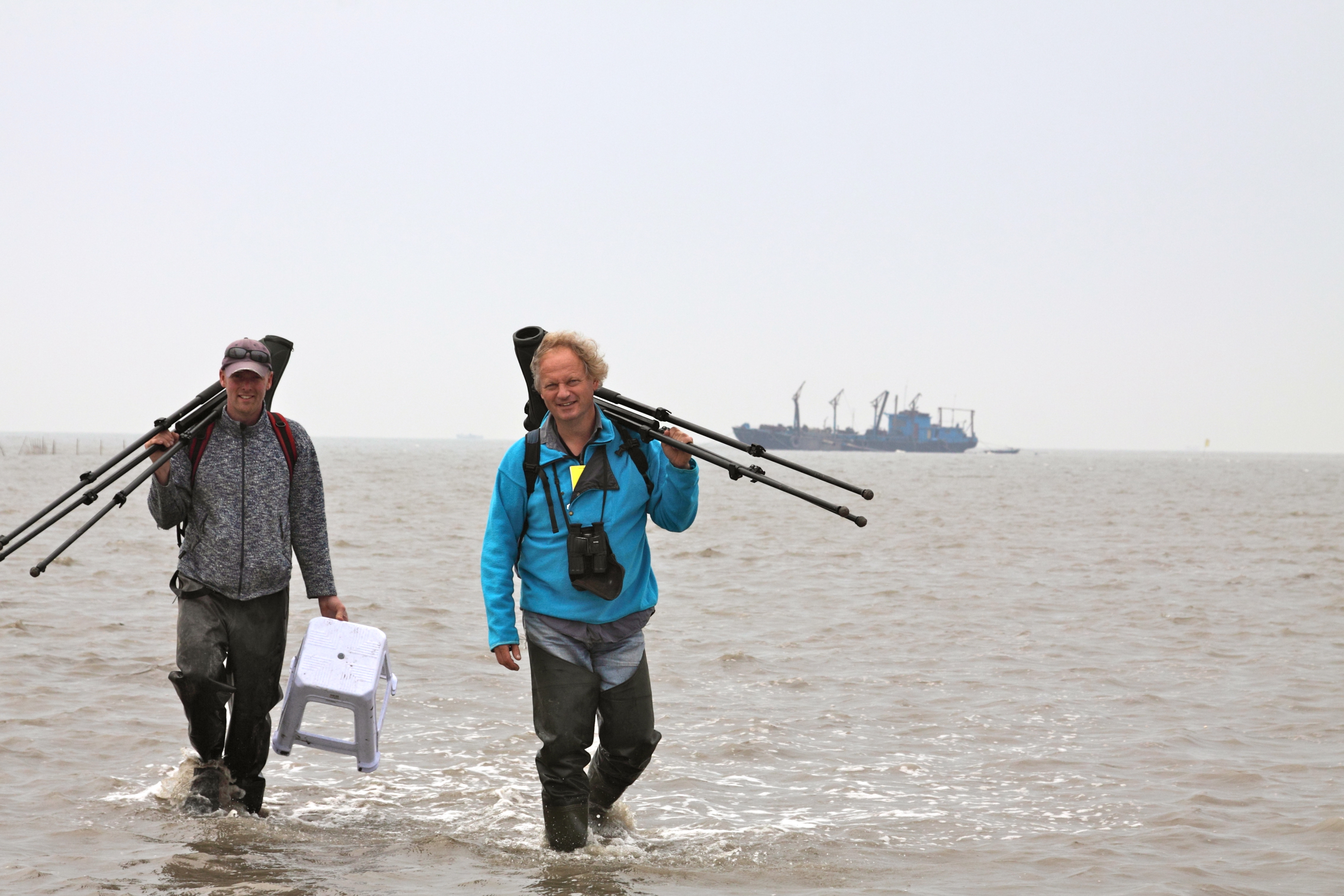 Sytze and Theunis walking the mudflats of China. Photo: Adrian Boyle[/caption]
Sytze was traditionally educated as a classical percussionist at the conservatory of Amsterdam. After having played in e.g. the Royal Concertgebouw Orchestra and the Dutch Philharmonic Orchestra, he focused on his own projects, developing an authentic way of playing that is characterized by a great attention for timbre, inspired on landscapes, nature and birds. Resulting in 2008 in his first solo project LÂN (land), in which he translated these fascinations into film and music. It was performed at several festivals in The Netherlands and in New York on the New Island Festival. The successor of this project will be made in 2018 when Leeuwarden is European Capital of Culture. Within this program Sytze will make his own version of ‘Conference of the Birds’ with Club Guy & Roni (dance) and 2000 amateur brass musicians.
Beside his solo projects he collaborates with visual artists, filmmakers, poets, architects and scientists. Together with Theunis Piersma he developed in 2011 the program ‘Music of Migration’ about global bird migration, which they performed over the years in China (WWF), Sweden and The Netherlands. In 2017 their new program ‘TRACKS’ had its premiere at the Oerol Festival on Terschelling (see photographs and the TeamPiersma Science and Arts page).
Website: www.sytzepruiksma.com.
Profile image and below: René den Engelsman.
Sytze and Theunis walking the mudflats of China. Photo: Adrian Boyle[/caption]
Sytze was traditionally educated as a classical percussionist at the conservatory of Amsterdam. After having played in e.g. the Royal Concertgebouw Orchestra and the Dutch Philharmonic Orchestra, he focused on his own projects, developing an authentic way of playing that is characterized by a great attention for timbre, inspired on landscapes, nature and birds. Resulting in 2008 in his first solo project LÂN (land), in which he translated these fascinations into film and music. It was performed at several festivals in The Netherlands and in New York on the New Island Festival. The successor of this project will be made in 2018 when Leeuwarden is European Capital of Culture. Within this program Sytze will make his own version of ‘Conference of the Birds’ with Club Guy & Roni (dance) and 2000 amateur brass musicians.
Beside his solo projects he collaborates with visual artists, filmmakers, poets, architects and scientists. Together with Theunis Piersma he developed in 2011 the program ‘Music of Migration’ about global bird migration, which they performed over the years in China (WWF), Sweden and The Netherlands. In 2017 their new program ‘TRACKS’ had its premiere at the Oerol Festival on Terschelling (see photographs and the TeamPiersma Science and Arts page).
Website: www.sytzepruiksma.com.
Profile image and below: René den Engelsman.
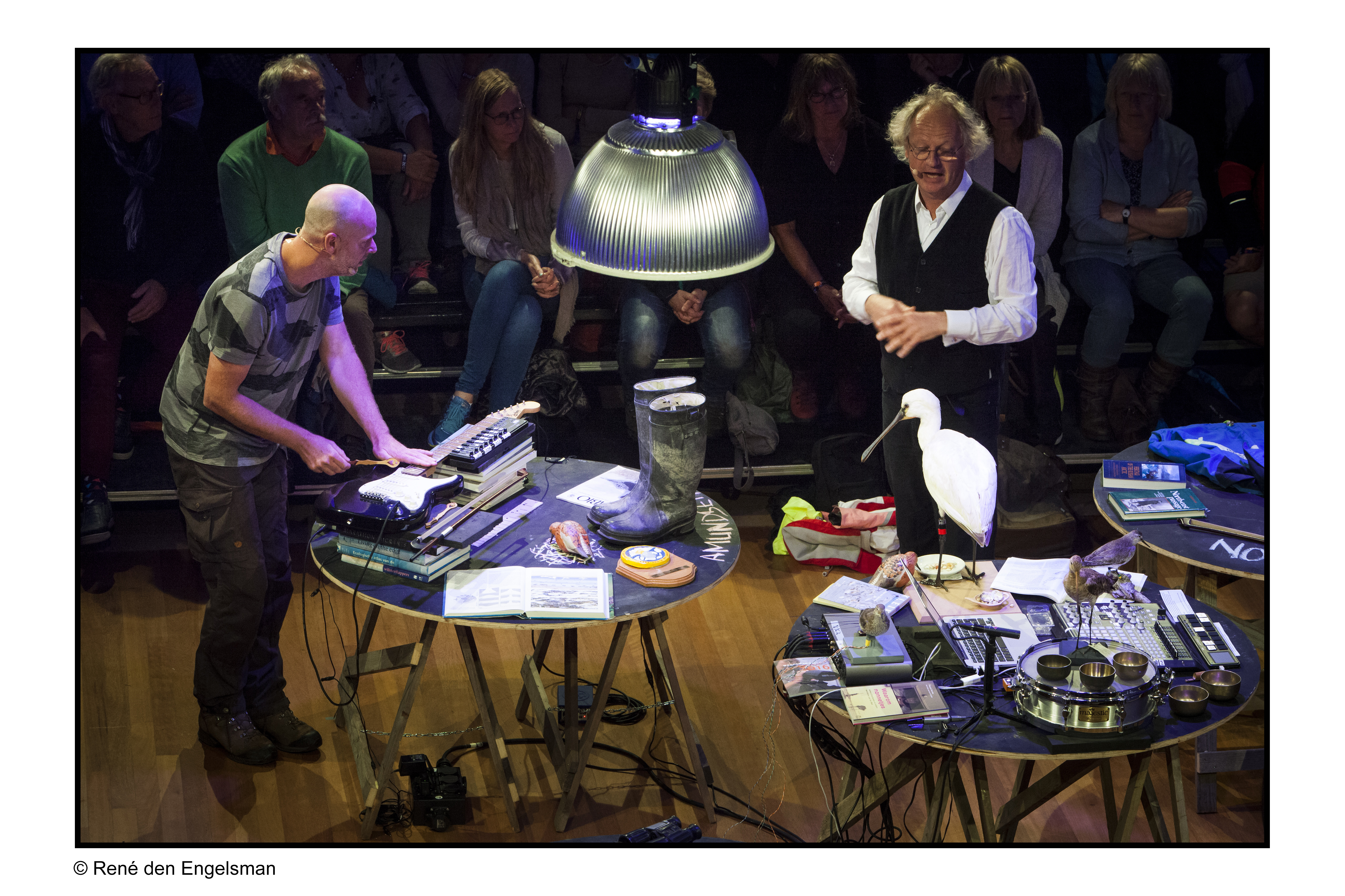
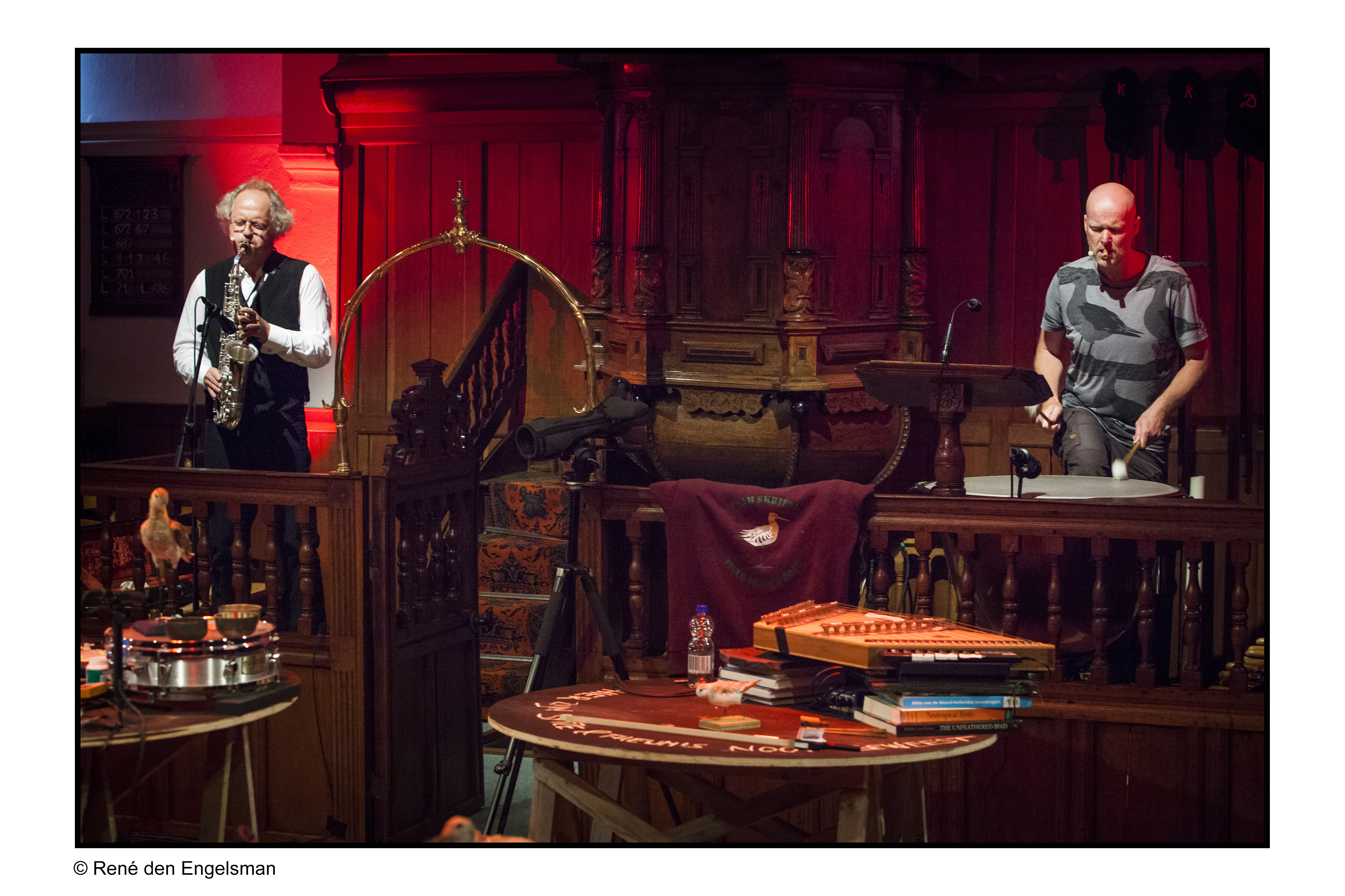
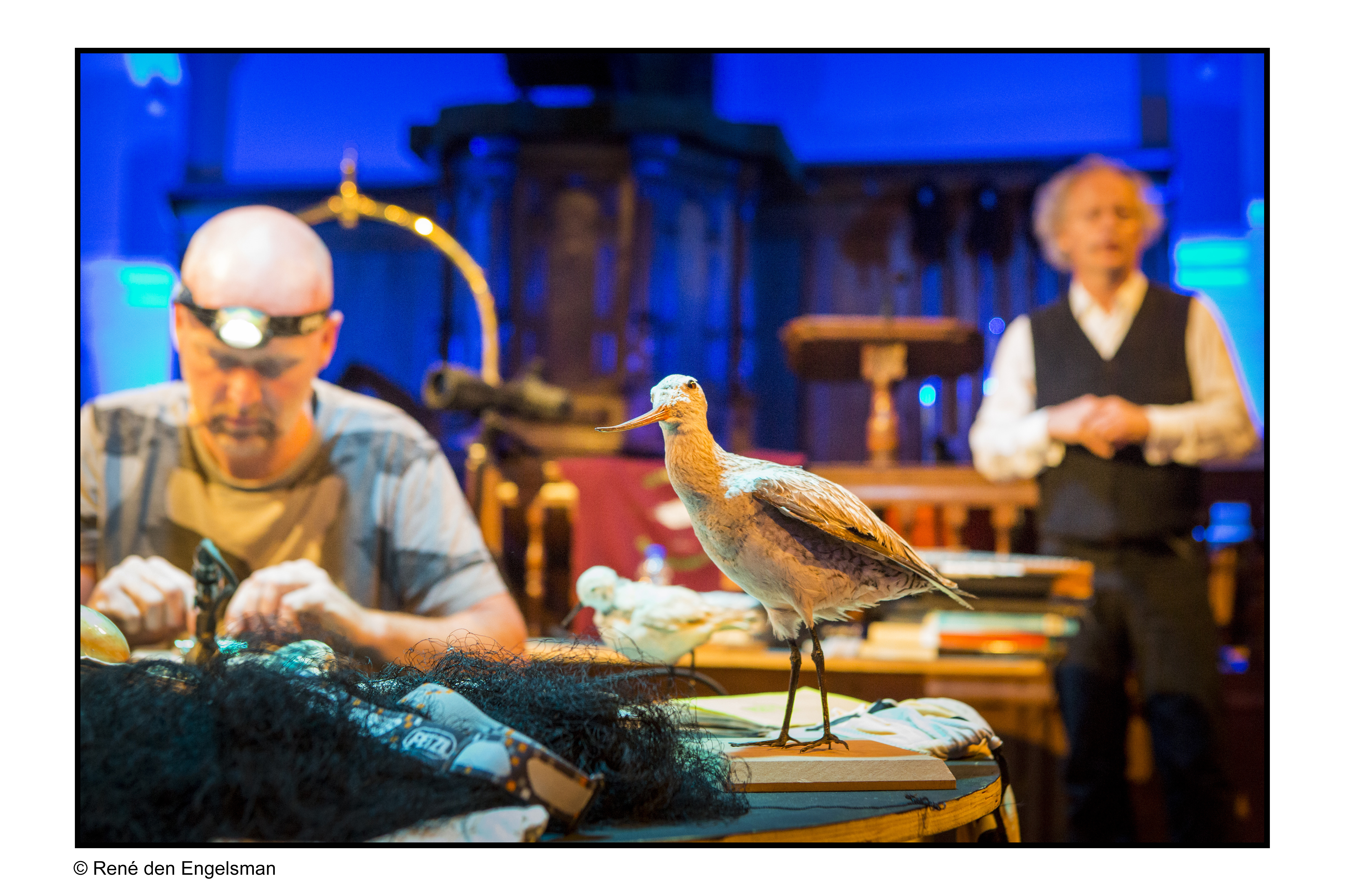
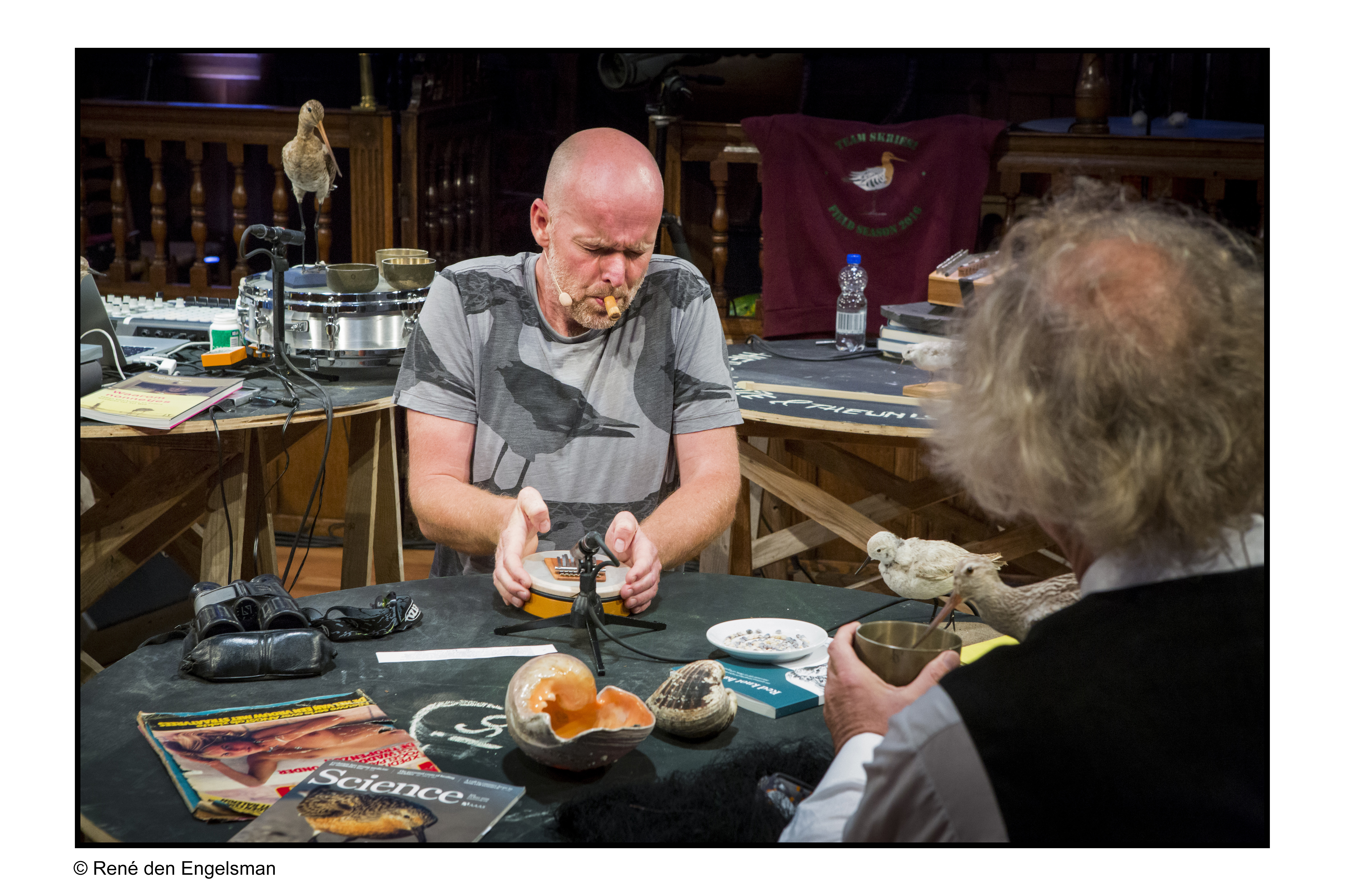
Tamar Lok
I am a post-doctoral researcher at the Coastal Systems group of the Royal Netherlands Institute for Sea Research (NIOZ). I have a keen interest in understanding the causes and demographic consequences of (individual) variation in habitat choice and migration strategies of coastal migrants. During my PhD, I studied the demographic consequences of individual variation in migration strategies of Spoonbills. I found that Spoonbills are highly faithful to their wintering sites, and that Spoonbills wintering in Europe had higher survival and bred earlier than Spoonbills wintering south in West Africa. While historically, most Spoonbills wintered in West Africa, more and more Spoonbills now decide to winter in Europe. However, this shift in wintering distribution is slower than optimal, suggesting constraints in the evolution of new migratory routines. During my first postdoc, I analyzed the Team Piersma datasets of Red Knots, Great Knots and Bar-tailed Godwits in the East-Asian Australasian Flyway to study the effects of habitat destruction along the Yellow Sea on seasonal survival of these long-distance migrating shorebird species. In 2015, I was awarded a Rubicon fellowship to join the research group of Olivier Gimenez and Roger Pradel at the Centre for Evolutionary and Functional Ecology (CEFE) in Montpellier (France). Here I learnt how to build integrated population models in a Bayesian framework, with the aim to integrate count, resighting and tracking data to improve the estimation of timing and habitat use during migration, survival and population sizes of migratory birds, using Red Knots and Eurasian Spoonbills as case studies. My current research at NIOZ focuses on the role of early life experience in shaping individual variation in habitat site choice and migration strategies of Eurasian Spoonbills. To this aim, I individually follow juvenile spoonbills and their parents through a combination of colour-banding and high-resolution tracking techniques using the UvA Bird Tracking System and collect data on the (social) environment experienced by these juveniles. For an overview of and links to my publications and more details about my research, see my personal website, ResearchGate and Google Scholar.
Teresa Catry
I am a Research Assistant at the University of Lisbon, working mainly on shorebird and seabird ecology, but also with a strong interest on the conservation of steppe birds. My main research is focused on key state-of-the-art aspects of the ecology of coastal and marine birds in the contrasting ecological contexts of tropical, sub-tropical and temperate estuarine/marine ecosystems.
Work with coastal birds (shorebirds) aims at implementing a long-term international program focused on intercontinental (African-European) migratory connectivity and the role of migrants in ecological networks, using estuarine birds as models. In particularly, research is focused in (1) developing methods to quantitatively assess the quality of foraging and roosting resources in both temperate and tropical estuaries, (2) characterizing migratory connectivity of shorebirds within the East Atlantic Flyway (Europe and Africa), (3) describing the structure and functioning of food webs leading to shorebirds and (4) assessing the role of these migrant birds on the dynamics of coastal ecosystems.
Fieldwork has been carried out in Portugal, Morocco, Mauritania and Guinea-Bissau.
[caption id="attachment_4667" align="aligncenter" width="4000"]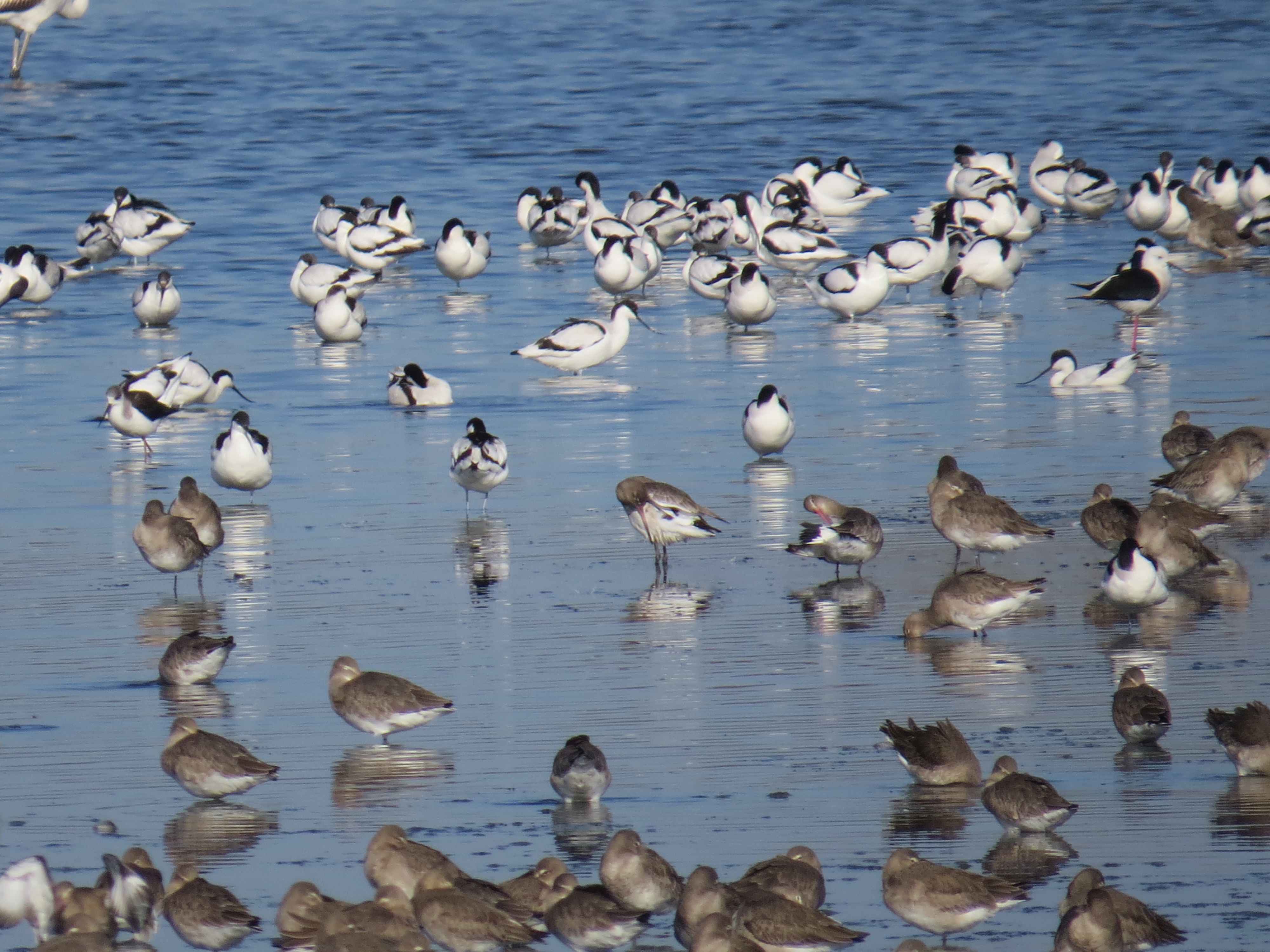 Roosting shorebirds on a saltpan at the Tagus estuary, Lisbon, Portugal. Photo: Teresa Catry[/caption]
The aim to work with shorebirds along the East Atlantic Flyway, namely in Mauritania, was the first point of contact with Theunis, leading to a dynamic and fruitful collaboration in different projects (including shared student supervision) during the last years.
For an overview of my research, please see my personal and team website, or keep connected via twitter @TeresaCatry and @tidal_wings.
[caption id="attachment_4666" align="aligncenter" width="4000"]
Roosting shorebirds on a saltpan at the Tagus estuary, Lisbon, Portugal. Photo: Teresa Catry[/caption]
The aim to work with shorebirds along the East Atlantic Flyway, namely in Mauritania, was the first point of contact with Theunis, leading to a dynamic and fruitful collaboration in different projects (including shared student supervision) during the last years.
For an overview of my research, please see my personal and team website, or keep connected via twitter @TeresaCatry and @tidal_wings.
[caption id="attachment_4666" align="aligncenter" width="4000"]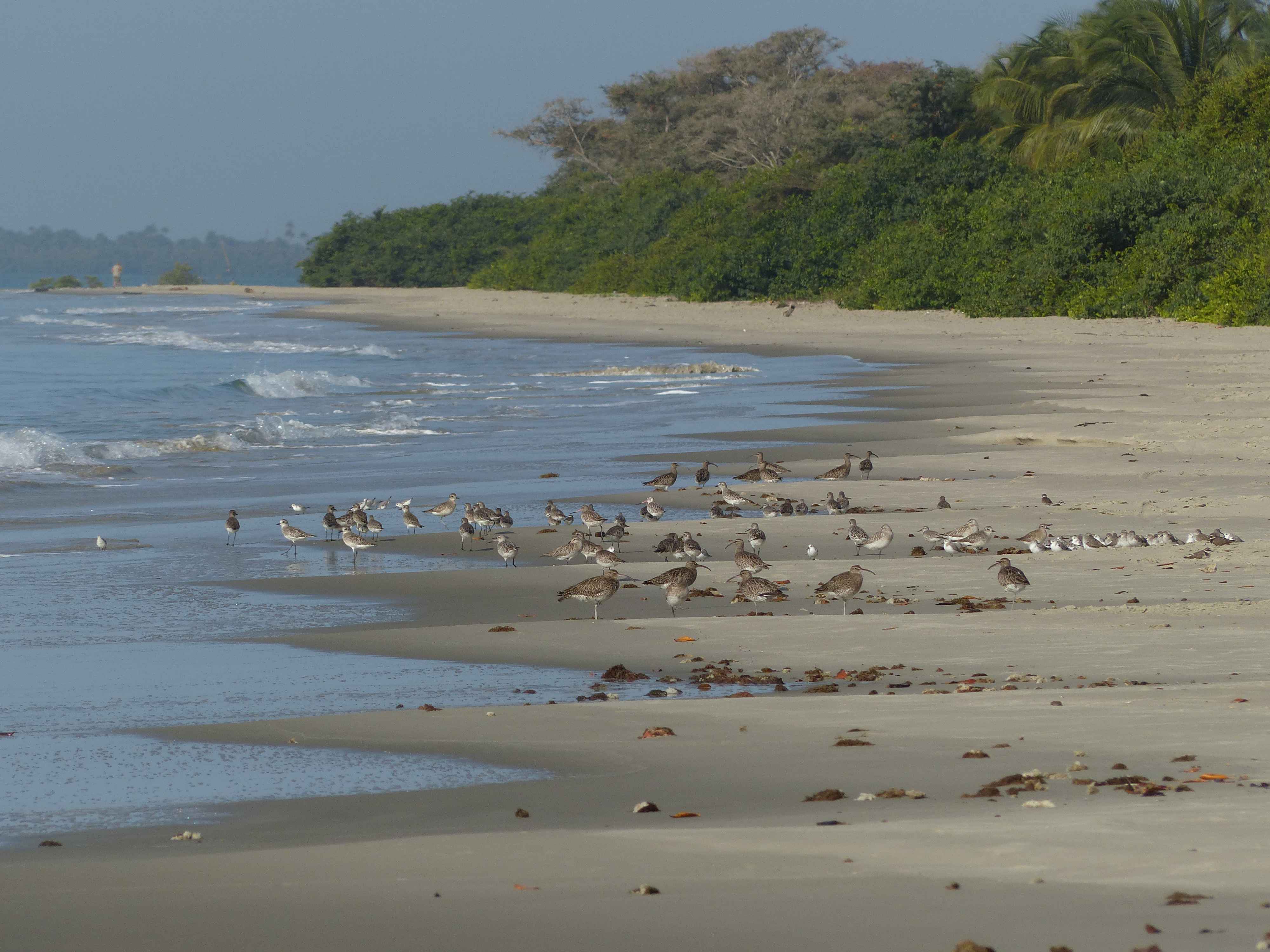 Roosting shorebirds on a tropical beach of the Bijagós archipelago, Guinea-Bissau. Photo: Teresa Catry[/caption]
Roosting shorebirds on a tropical beach of the Bijagós archipelago, Guinea-Bissau. Photo: Teresa Catry[/caption]
Thomas Lameris
As an ecologist my main interest is how birds can adapt to indirect anthropogenic changes, such as human-induced climate warming and habitat changes following a shift in land-use. Currently, my main topic of investigation are the causes and consequences of mistimed reproduction under climate warming in migratory birds. I am based as a post-doc at the Netherlands Institute for Sea Research (NIOZ). The Arctic is the most rapidly warming region on the globe, which is why I conduct most of my research on Arctic migratory birds. By tracking birds and modelling their migration, I aim to answer why birds may be unable to advance timing of reproduction under a warming climate. By making observations and experimental work with juvenile birds, I study the potential consequences of mistimed reproduction on growth and survival. I combine this with long-term data to study whether mistiming can ultimately affect population demographics. While I started to study these questions specifically for Arctic barnacle geese during my PhD, I currently encompass a set of Arctic migratory birds, including geese, shorebirds and seabirds. During my current post-doc, I focus on Red Knots breeding in Arctic Russia. Please find more information on my webpage, and follow me on twitter: @thomaslameris
Thomas Oudman
Thomas Oudman is a behavioural ecologist at the Royal Netherlands Institute for Sea Research, and currently enjoys a 2-year Visiting Scholarship at the Laland Lab, financed by the Netherlands Organization for Scientific Research. He is working on the learning behaviour of migratory birds, focusing on how traditions help and hinder them in adjusting their flight schedules and destination as a response to e.g. climate change. Thomas' personal website can be found at www.thomasoudman.com.
[caption id="attachment_1220" align="alignnone" width="283"]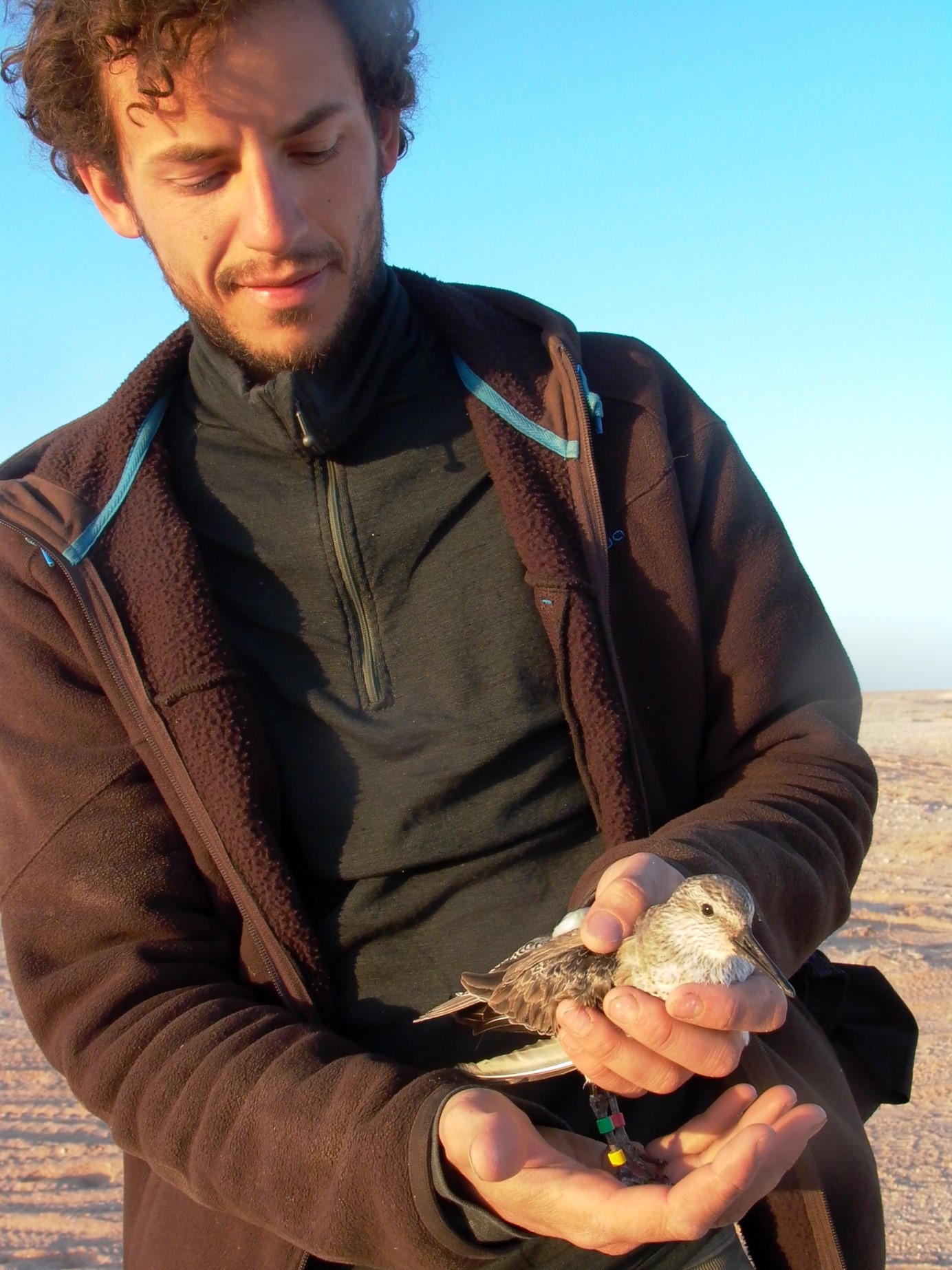 About to release a Red Knot which is deployed with a 5 g radio tag. Photo: Jan van Gils[/caption]
His PhD thesis, on Red Knots wintering at Banc d’Arguin in Mauritania, focussed on the factors that determine their foraging decisions. This work was done at the NIOZ Royal Netherlands Institute for Sea Research, under supervision of Jan van Gils and Theunis Piersma. Using experiments, mathematical modelling and radio-tracking of red knots in the wild, he compared the decisions of Mauritanian Red Knots with their conspecific counterparts in the Dutch Wadden Sea. These studies show large differences in the habits of these two subspecies, which can be related to environmental differences.
In a joint project by NIOZ, Sovon and Global Flyway Network, and financed by Programme Towards a Rich Wadden Sea, he published a report evaluating all winter counts of waterbirds at Banc d’Arguin, showing that red knots and the bar-tailed godwits have shown strong declines over the last thirty years. The numbers suggest that especially species that depend on the intertidal have been in decline, but much more effort is needed to realize population trends of most species with any confidence.
[caption id="attachment_1219" align="alignnone" width="555"]
About to release a Red Knot which is deployed with a 5 g radio tag. Photo: Jan van Gils[/caption]
His PhD thesis, on Red Knots wintering at Banc d’Arguin in Mauritania, focussed on the factors that determine their foraging decisions. This work was done at the NIOZ Royal Netherlands Institute for Sea Research, under supervision of Jan van Gils and Theunis Piersma. Using experiments, mathematical modelling and radio-tracking of red knots in the wild, he compared the decisions of Mauritanian Red Knots with their conspecific counterparts in the Dutch Wadden Sea. These studies show large differences in the habits of these two subspecies, which can be related to environmental differences.
In a joint project by NIOZ, Sovon and Global Flyway Network, and financed by Programme Towards a Rich Wadden Sea, he published a report evaluating all winter counts of waterbirds at Banc d’Arguin, showing that red knots and the bar-tailed godwits have shown strong declines over the last thirty years. The numbers suggest that especially species that depend on the intertidal have been in decline, but much more effort is needed to realize population trends of most species with any confidence.
[caption id="attachment_1219" align="alignnone" width="555"]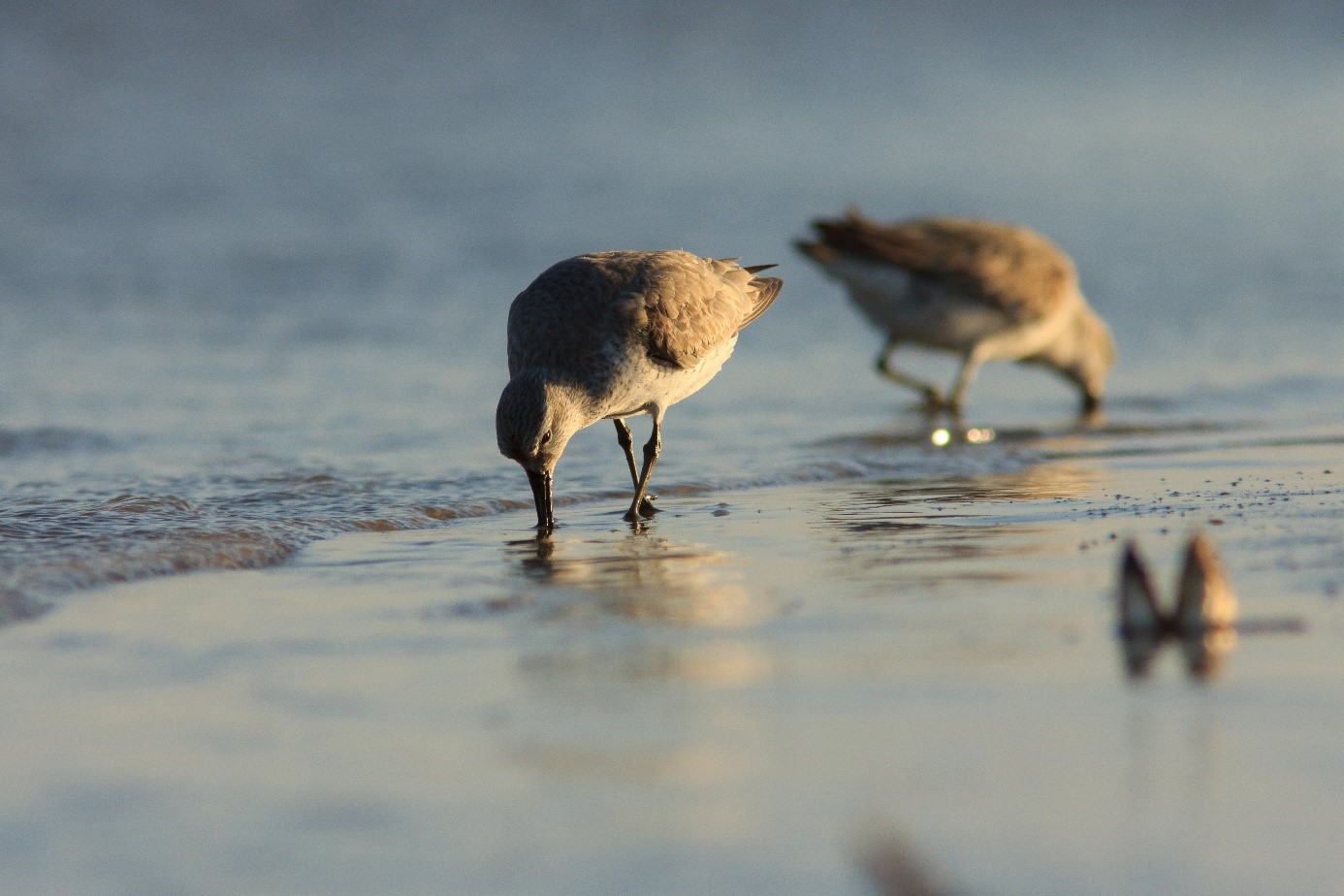 Red Knots foraging in the water line at Banc d’Arguin. Photo: Jeroen Onrust[/caption]
Thomas was also involved as a postdoc in rounding up the Metawad project, working amongst others on the breeding distribution of Spoonbills in the Netherlands.
Thomas received his MSc in 2010 at the University of Amsterdam, having done theoretical work on the presence (or actually absence) of early warning signals before ecosystem collapses with Maarten Boerlijst and Andre de Roos (University of Amsterdam) on the timing of Barnacle Goose migration to Spitsbergen with Maarten Loonen, Jouke Prop and Gotz Eichhorn (University of Groningen). Since 2008, he has been involved in Barnacle and Pink-footed Goose research on Spitsbergen lead by Jouke Prop, recording the strongly increasing impact that polar bears have on the breeding success of these geese.
On 18 May 2017 Jessica Schop of the Wadden Academy reviewed Thomas' thesis (in Dutch): Hoe kanoeten-gewoontes in Europa en Afrika verschillen.
[caption id="attachment_1210" align="alignnone" width="302"]
Red Knots foraging in the water line at Banc d’Arguin. Photo: Jeroen Onrust[/caption]
Thomas was also involved as a postdoc in rounding up the Metawad project, working amongst others on the breeding distribution of Spoonbills in the Netherlands.
Thomas received his MSc in 2010 at the University of Amsterdam, having done theoretical work on the presence (or actually absence) of early warning signals before ecosystem collapses with Maarten Boerlijst and Andre de Roos (University of Amsterdam) on the timing of Barnacle Goose migration to Spitsbergen with Maarten Loonen, Jouke Prop and Gotz Eichhorn (University of Groningen). Since 2008, he has been involved in Barnacle and Pink-footed Goose research on Spitsbergen lead by Jouke Prop, recording the strongly increasing impact that polar bears have on the breeding success of these geese.
On 18 May 2017 Jessica Schop of the Wadden Academy reviewed Thomas' thesis (in Dutch): Hoe kanoeten-gewoontes in Europa en Afrika verschillen.
[caption id="attachment_1210" align="alignnone" width="302"]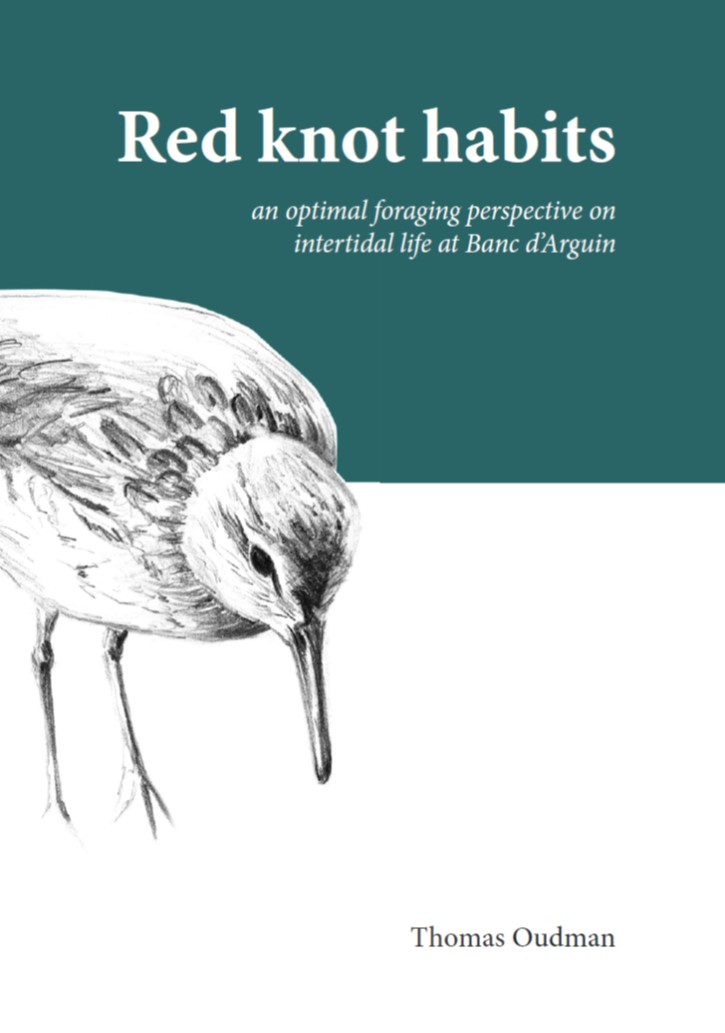 The cover of Thomas' PhD thesis[/caption]
The cover of Thomas' PhD thesis[/caption]
Tienke Koning
Since a couple of years I support Team Theunis as a fundraiser. From 2007 until 2015 I was the director of Ubbo Emmius Fund, the charity of the University of Groningen, The Netherlands. Alumni of our university are very important for the relation between society and science. Ubbo Emmius Fund brings both parties together by f.i. crowdfunding campaigns. After my retirement in 2015 I spend part of my time in finding new ways of funding for the scientific work of Team Piersma. I strongly believe in the collaboration of organisations in the field of conservation together with scientists. They sometimes tend to be competitors in finding funds for their own goals. Since scientists such as Theunis Piersma and his coworkers are feeding nature conservation organisations with fundamental reliable data and insights there should be a stronger connection in this field. In 2017 and 2018, we run a crowdfunding campaign for the Black-tailed Godwit. Although many, many organisations run similar fundraising campaigns for the Black-tailed Godwit, we found sponsors and are grateful to all who are now sponsoring the scientific work of team Piersma, whose work is the basic understructure for nature conservation.
Ying Chi Chan
I am a PhD candidate of the University of Groningen (RUG), currently based at the NIOZ Royal Netherlands Institute for Sea Research. My project studies how migratory shorebirds are impacted by, and how will they adapt to, the rapidly diminishing habitats at their fuelling stops in China. I am funded by the Ubbo Emmius Fund of the RUG (link to the RUG Alumni Hong Kong Newsletter). We work closely with Fudan University and Beijing Normal University in China, all under the umbrella of Global Flyway Network.
Fieldwork
Satellite tracking of individuals
I conducted three years of fieldwork putting satellite transmitters (PTTs, manufactured by Microwave Telemetry) in Northwest Australia. Using the latest developments in miniature satellite transmitters, we track three shorebirds species: the Bar-tailed Godwit, Great Knot and Red Knot. They migrate from Australia to their Siberian breeding areas via the Chinese and Korean coast. From the tracks we can identify important staging sites, and know the migration routes and timing of individuals.
[caption id="attachment_750" align="alignnone" width="487"]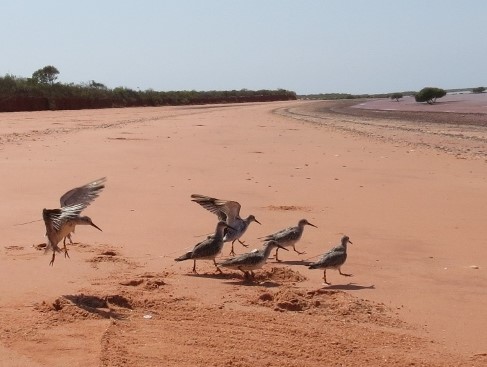 Releasing tagged great knots in Roebuck Bay[/caption]
Large-scale habitat surveys and benthic sampling at the Chinese coast
Together with PhD student Hebo Peng, in each spring, we visit as many staging sites as possible to sample the food, observe foraging behavior of birds and survey the area. We document threats at each site. Read more about our fieldwork at our blog on this website called "Coastal China Field Updates".
Harness development
Since 2013, I am involved in developing and testing harnesses to tag shorebirds with body structure like the red knot. The results of the earliest work were summarized in a publication in the Journal of Ornithology (DOI: 10.1007/s10336-015-1276-4). Feel free to contact me for latest developments!
[caption id="attachment_751" align="alignnone" width="1319"]
Releasing tagged great knots in Roebuck Bay[/caption]
Large-scale habitat surveys and benthic sampling at the Chinese coast
Together with PhD student Hebo Peng, in each spring, we visit as many staging sites as possible to sample the food, observe foraging behavior of birds and survey the area. We document threats at each site. Read more about our fieldwork at our blog on this website called "Coastal China Field Updates".
Harness development
Since 2013, I am involved in developing and testing harnesses to tag shorebirds with body structure like the red knot. The results of the earliest work were summarized in a publication in the Journal of Ornithology (DOI: 10.1007/s10336-015-1276-4). Feel free to contact me for latest developments!
[caption id="attachment_751" align="alignnone" width="1319"]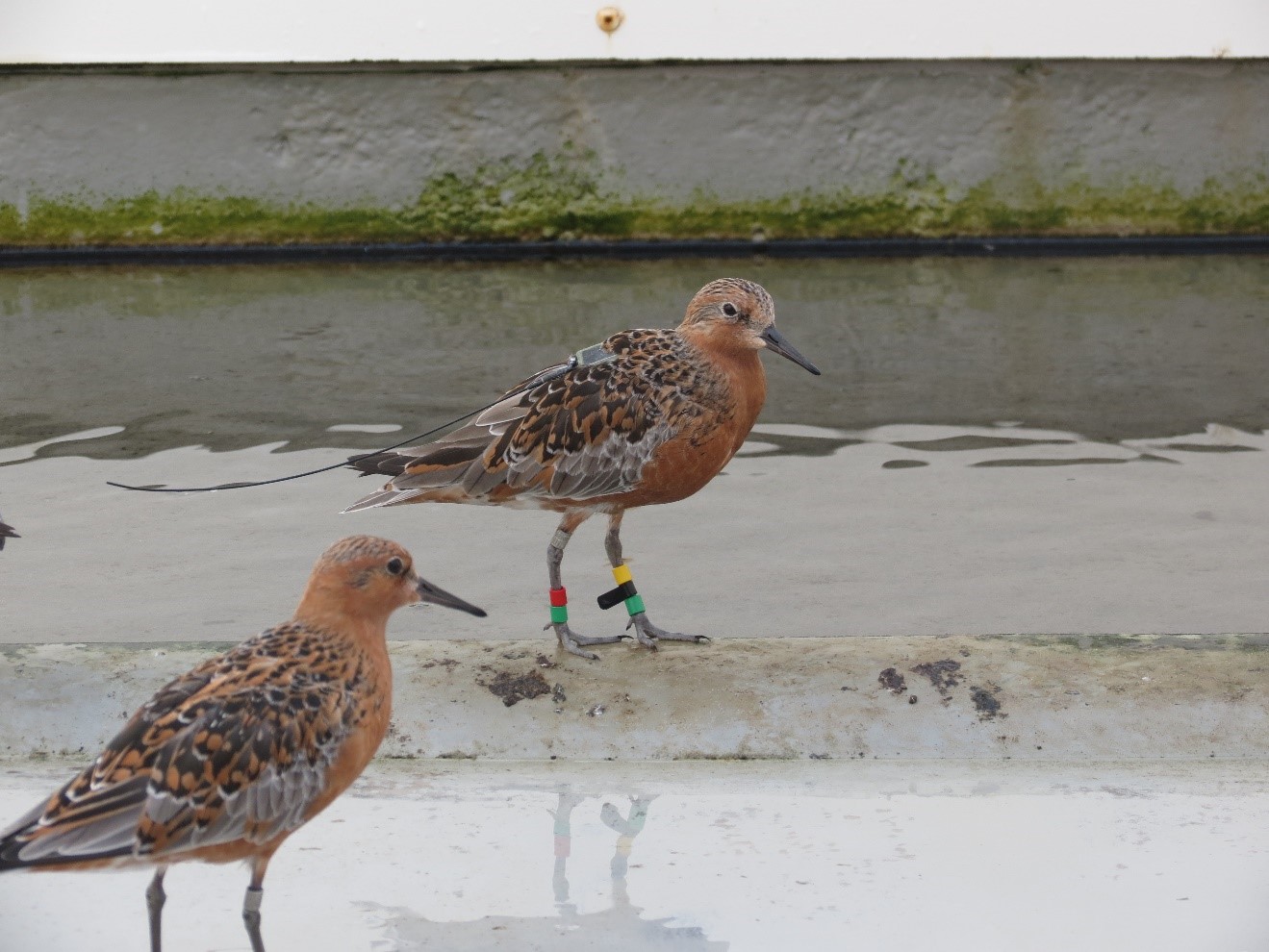 Captive Red Knot carrying a dummy tag in the NIOZ shorebird aviary. This is part of an experiment on how a body harness could affect their fattening and moulting[/caption]
My background
I was born and grew up in Hong Kong, a city at the south coast of China just at the edge of the tropics. I did my Bachelor degree in Environmental Life Science at the University of Hong Kong. My interest in avian ecology has motivated me to further my studies abroad, and I was very fortunate to receive the Erasmus Mundus Scholarship to join the Evolutionary Biology Master Programme at the University of Groningen in The Netherlands. My Masters research project with Theunis Piersma has brought me back to my 'flyway' where migratory birds are in steep decline because of human activities. After a few years of searching for funding (during which I collected preliminary data and learned the art of grant writing), in 2015 I can finally start a PhD to study how migratory shorebirds are impacted by the rapidly diminishing habitats at their fuelling stops in China.
Captive Red Knot carrying a dummy tag in the NIOZ shorebird aviary. This is part of an experiment on how a body harness could affect their fattening and moulting[/caption]
My background
I was born and grew up in Hong Kong, a city at the south coast of China just at the edge of the tropics. I did my Bachelor degree in Environmental Life Science at the University of Hong Kong. My interest in avian ecology has motivated me to further my studies abroad, and I was very fortunate to receive the Erasmus Mundus Scholarship to join the Evolutionary Biology Master Programme at the University of Groningen in The Netherlands. My Masters research project with Theunis Piersma has brought me back to my 'flyway' where migratory birds are in steep decline because of human activities. After a few years of searching for funding (during which I collected preliminary data and learned the art of grant writing), in 2015 I can finally start a PhD to study how migratory shorebirds are impacted by the rapidly diminishing habitats at their fuelling stops in China.
Zhengwang Zhang
I am a professor at College of Life Sciences, Beijing Normal University. I have a wide interests in avian ecology and conservation. My research team includes one associate professor, one lecturer, two postdoc, 5 PhD students and 6 postgraduate students. My research works currently focus on behavioral ecology of several species of birds (Kentish Plover, Penduline tits, Swallows, Pheasants), conservation biology of shorebirds in Bohai Bay along the East-Australian Flyway (Avocet, Terns, Red Knot, Black-tailed Godwit), adaptation and evolution of birds (Brown Eared Pheasant, Reeves’s Pheasant, Hill Partridges). For more information, please visit my website https://english-cls.bnu.edu.cn/faculty/ecology/86567.html.
Zhijun Ma
I am Professor and Principle Investigator in the bird ecology research group at the School of Life Sciences, Fudan University, China. My research targets birds living on China’s coastal wetlands, especially waterbirds and saltmarsh birds, focusing on habitat ecology, migration ecology, and conservation biology.
[caption id="attachment_2154" align="alignnone" width="404"]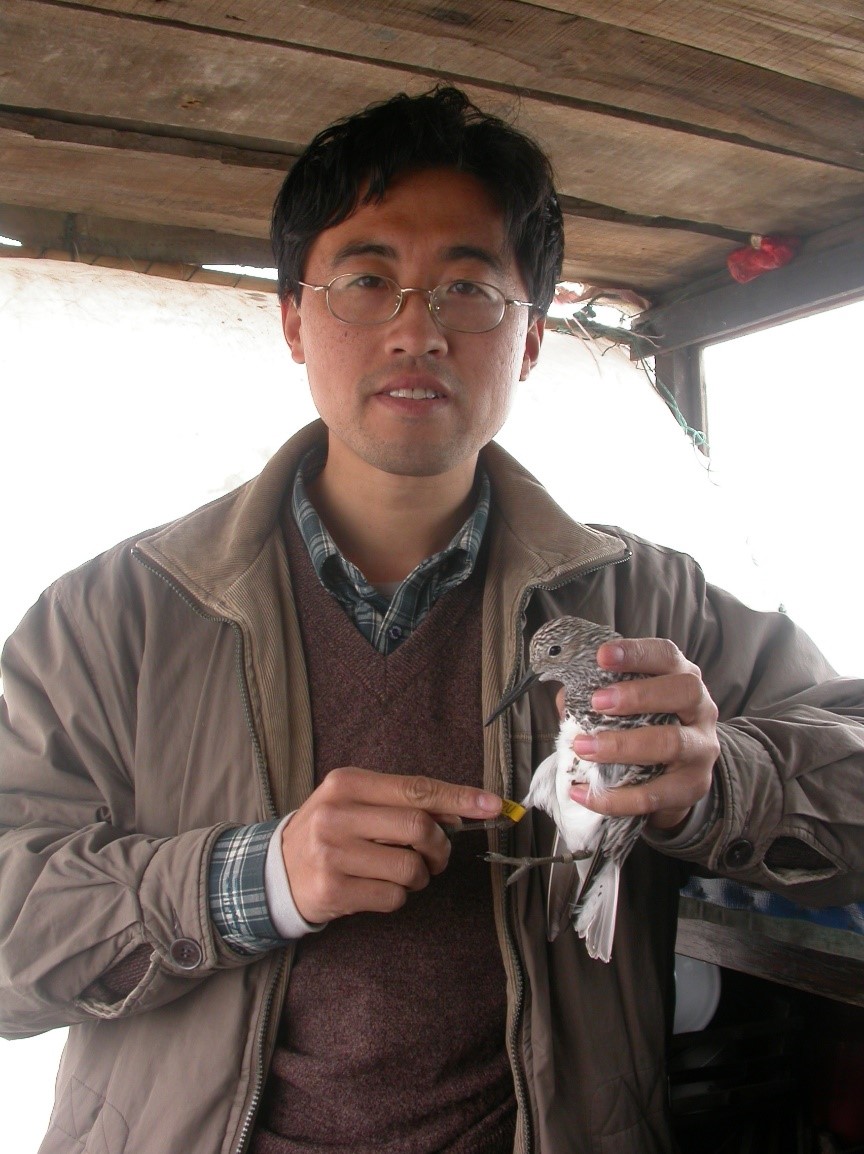 Zhijun Ma with a Great Knot[/caption]
I collaborate with Theunis focusing on the stopover ecology of migratory shorebirds along the East Asian-Australasian Flyway. Many shorebirds have suffered rapid population declines mainly due to loss and degradation of their critical stopover habitats in the Yellow Sea. My study focuses on detecting the spatio-temporal dynamics of migratory shorebirds in the Yellow Sea, exploring the response of shorebirds to the loss and degradation of stopover sites, as well as seeking for conservation strategy.
[caption id="attachment_2150" align="alignnone" width="720"]
Zhijun Ma with a Great Knot[/caption]
I collaborate with Theunis focusing on the stopover ecology of migratory shorebirds along the East Asian-Australasian Flyway. Many shorebirds have suffered rapid population declines mainly due to loss and degradation of their critical stopover habitats in the Yellow Sea. My study focuses on detecting the spatio-temporal dynamics of migratory shorebirds in the Yellow Sea, exploring the response of shorebirds to the loss and degradation of stopover sites, as well as seeking for conservation strategy.
[caption id="attachment_2150" align="alignnone" width="720"]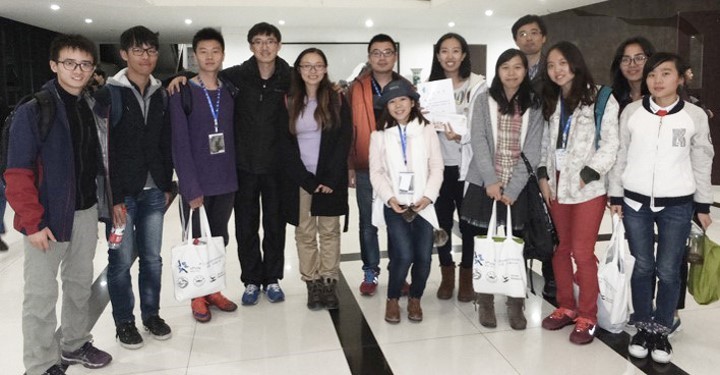 Team of Zhijun Ma at the 13th Chinese Ornithological Congress, Hefei, China[/caption]
For detailed information about my work, see my personal website.
Team of Zhijun Ma at the 13th Chinese Ornithological Congress, Hefei, China[/caption]
For detailed information about my work, see my personal website.